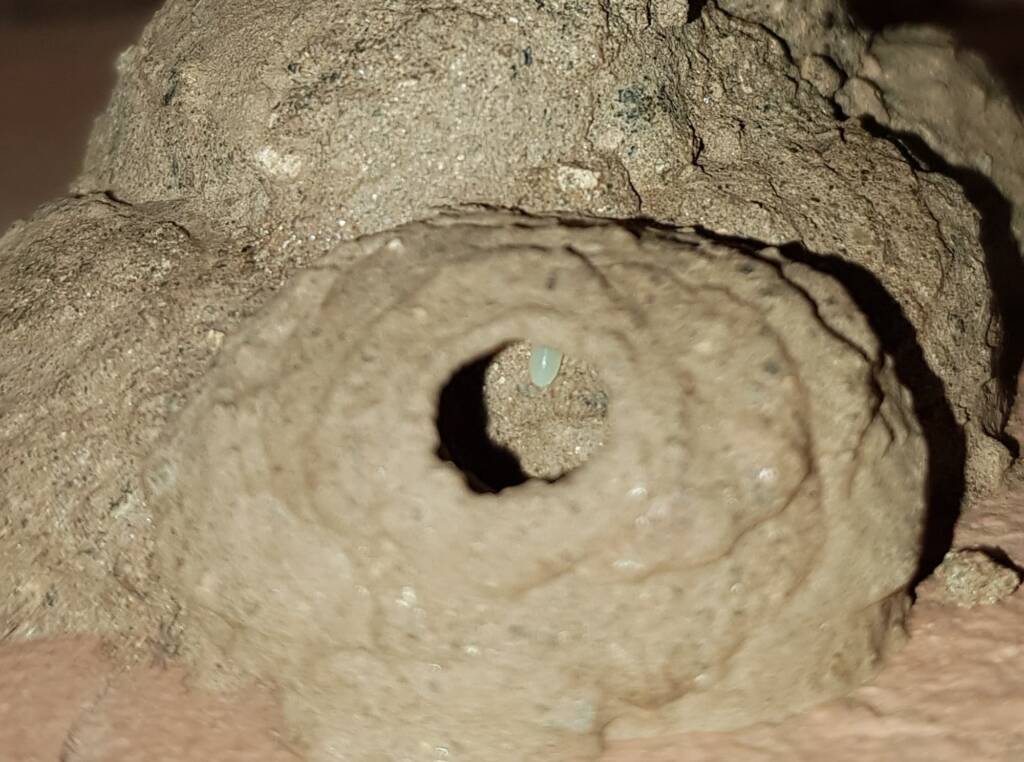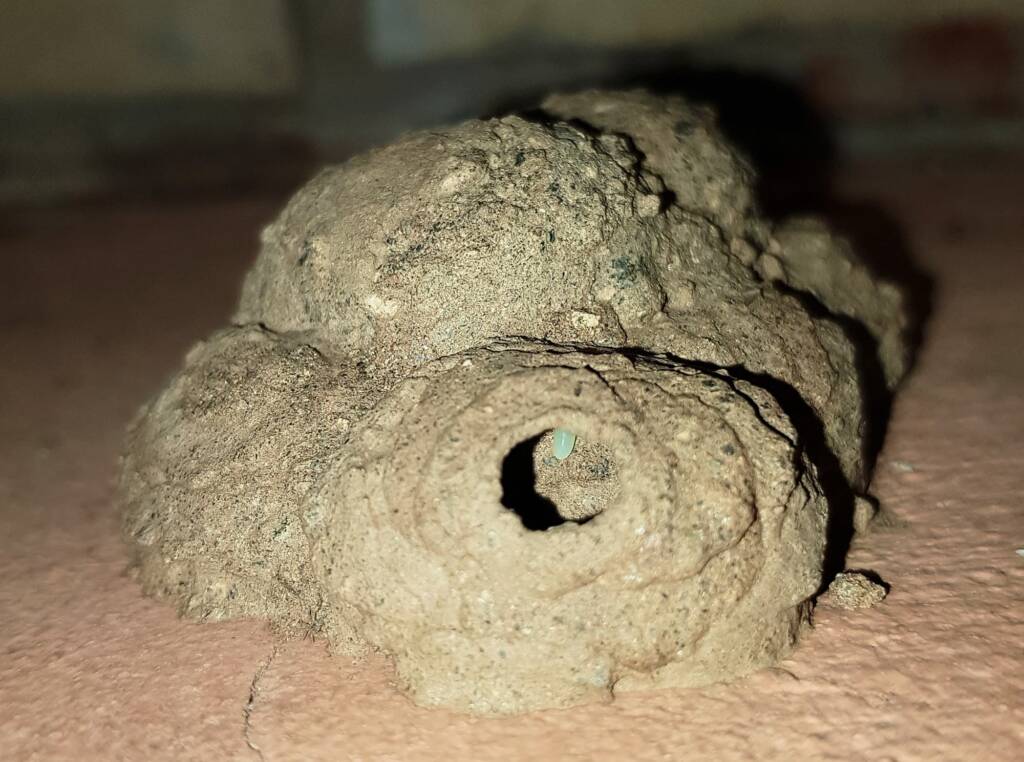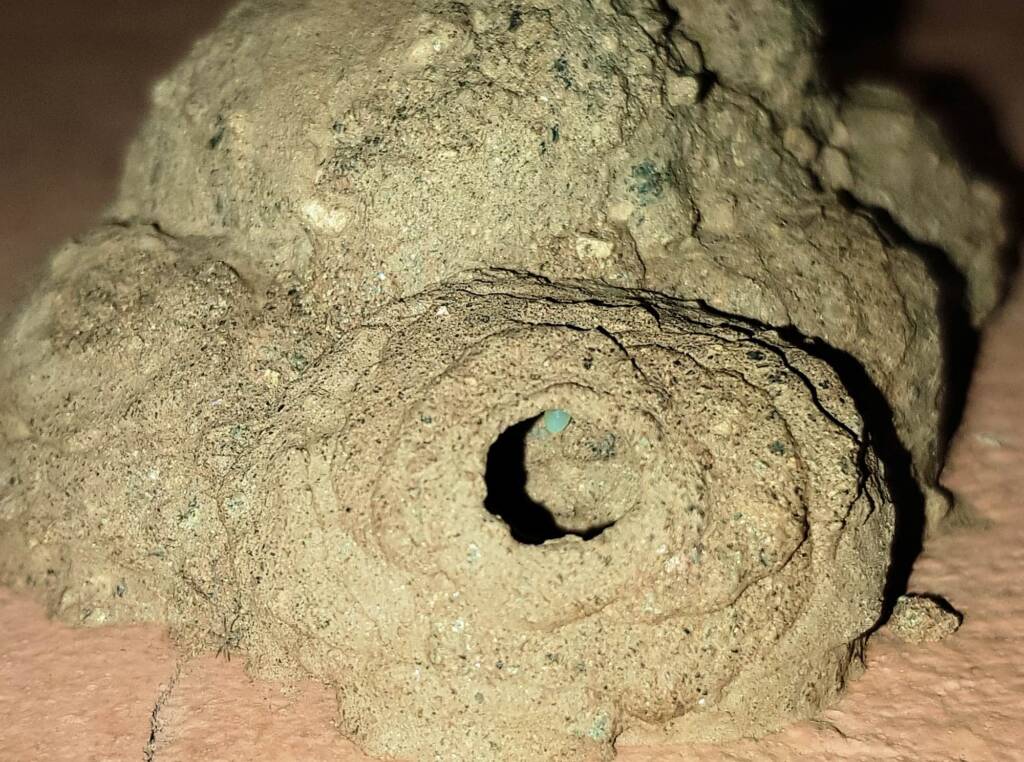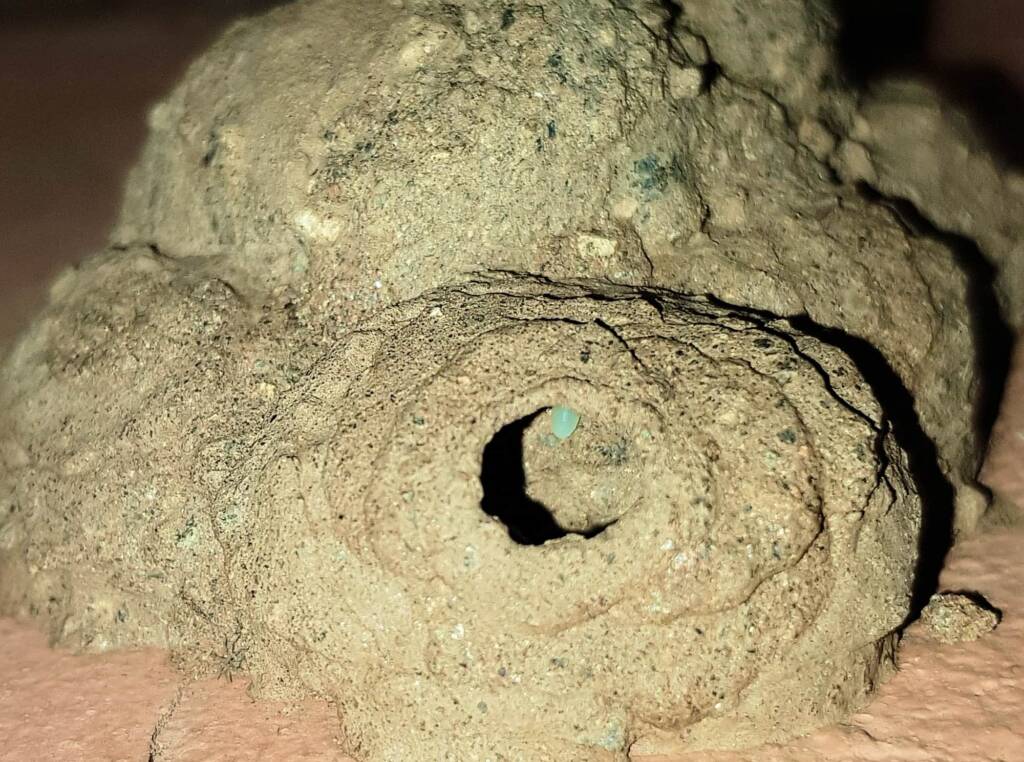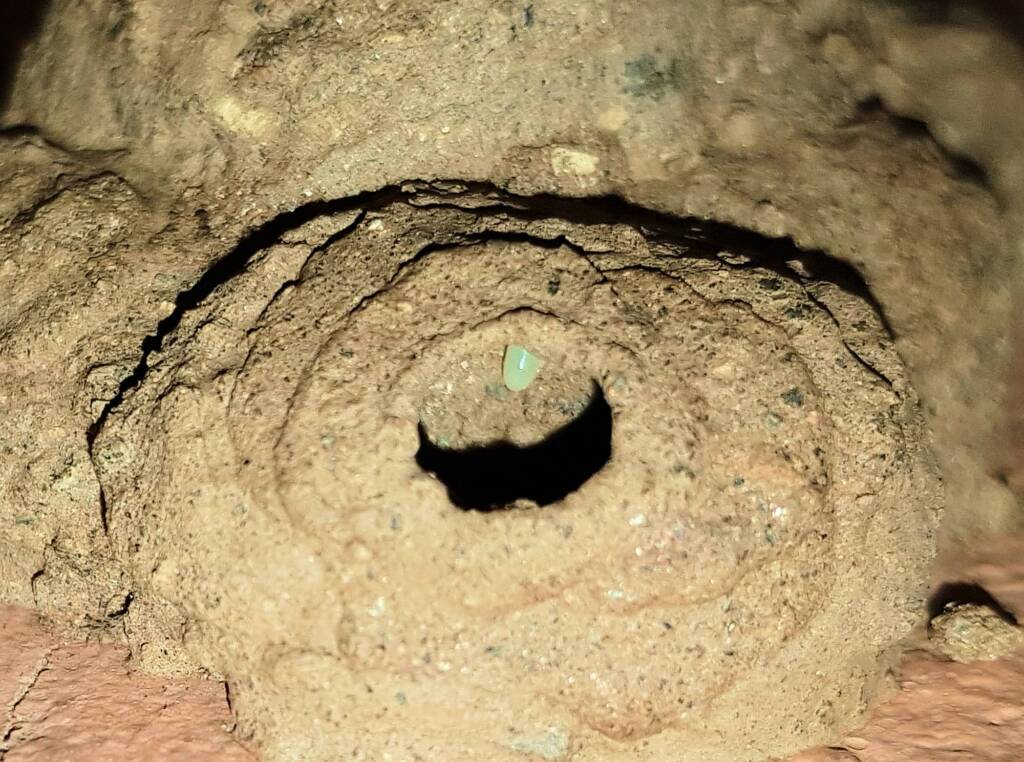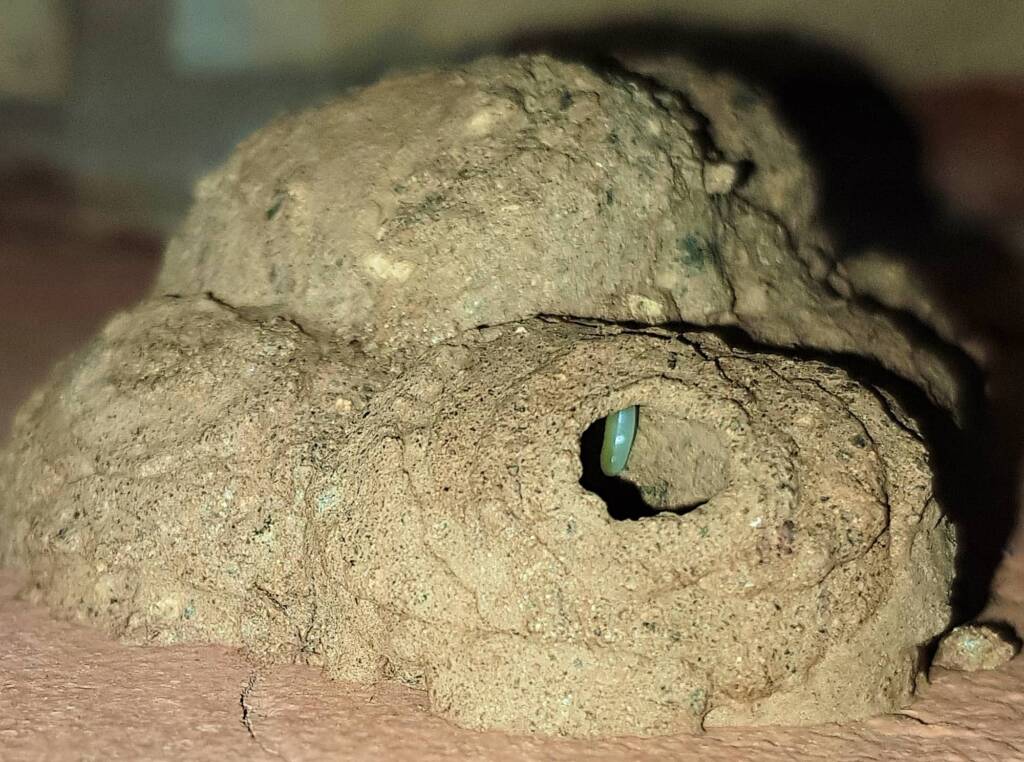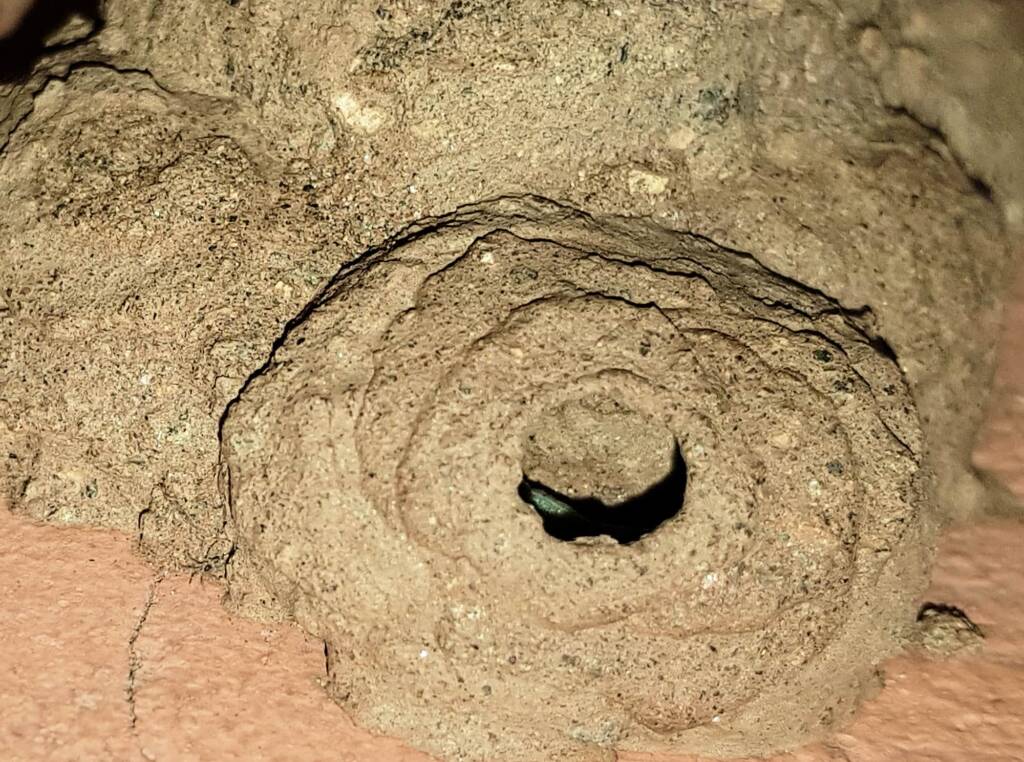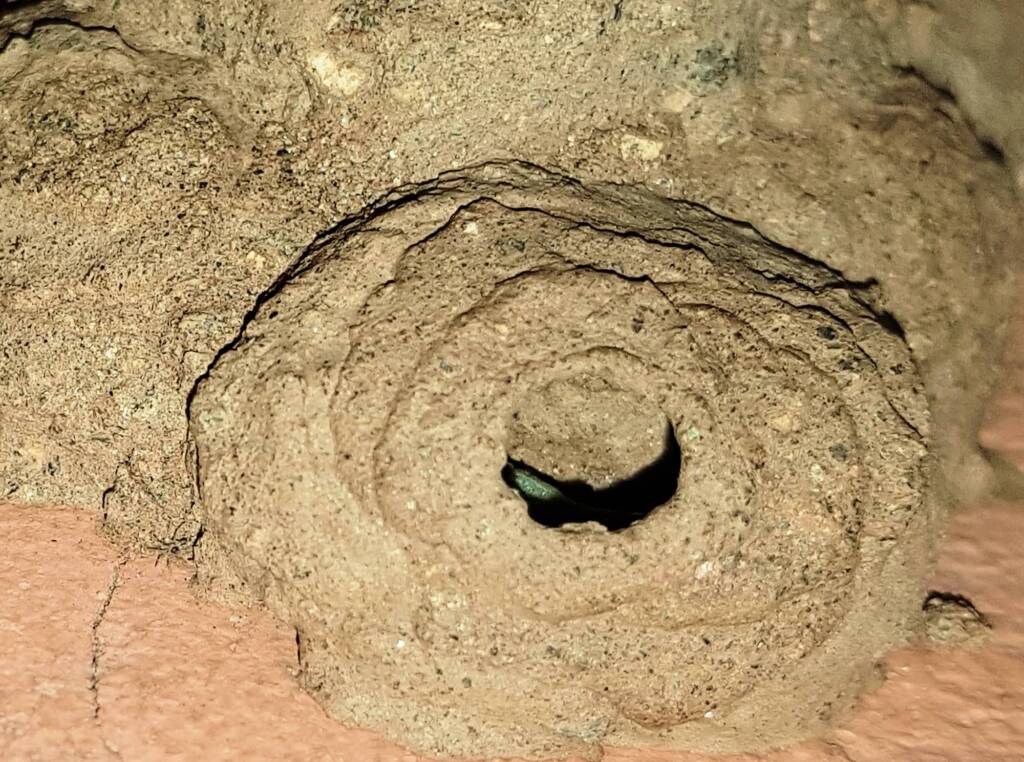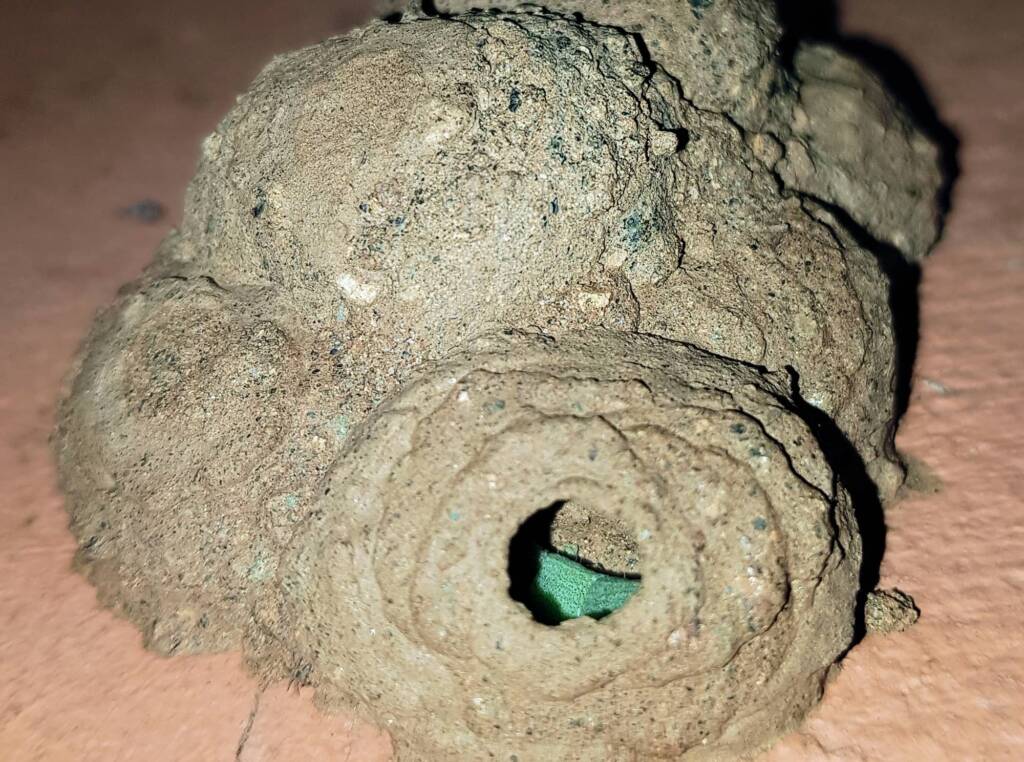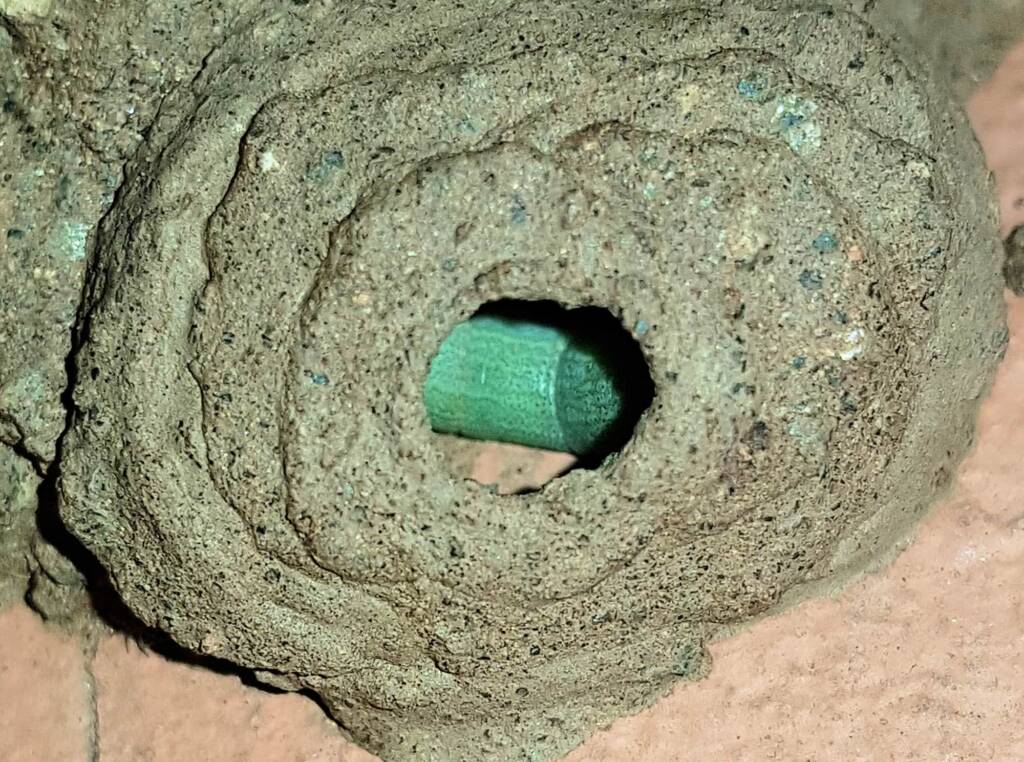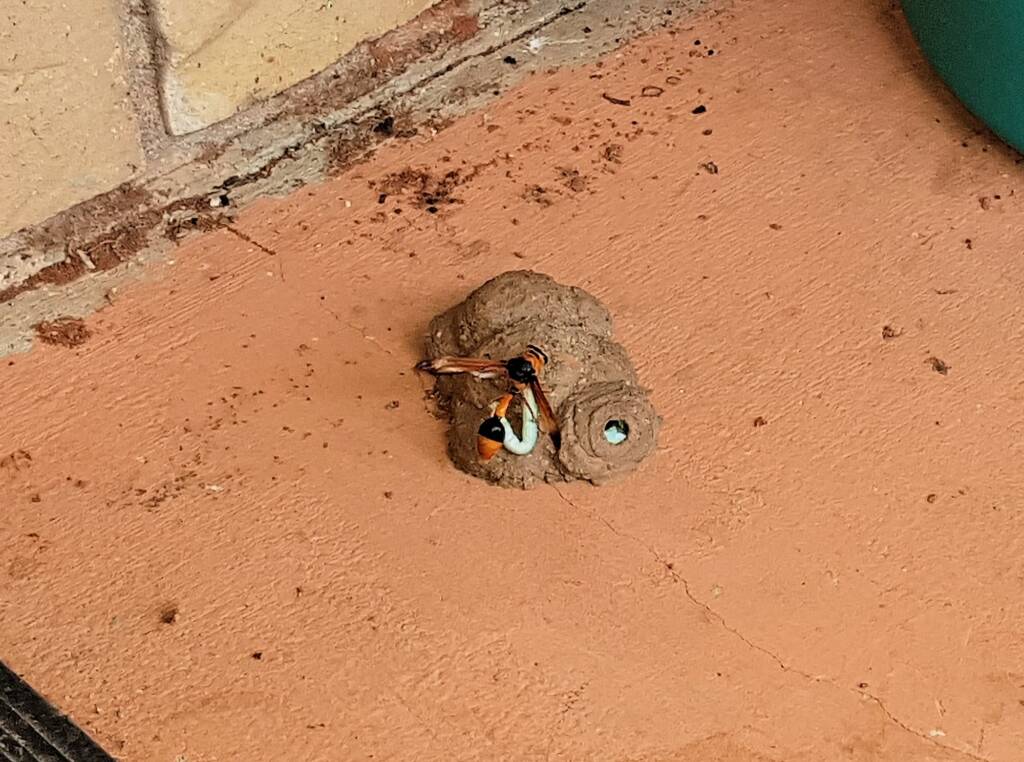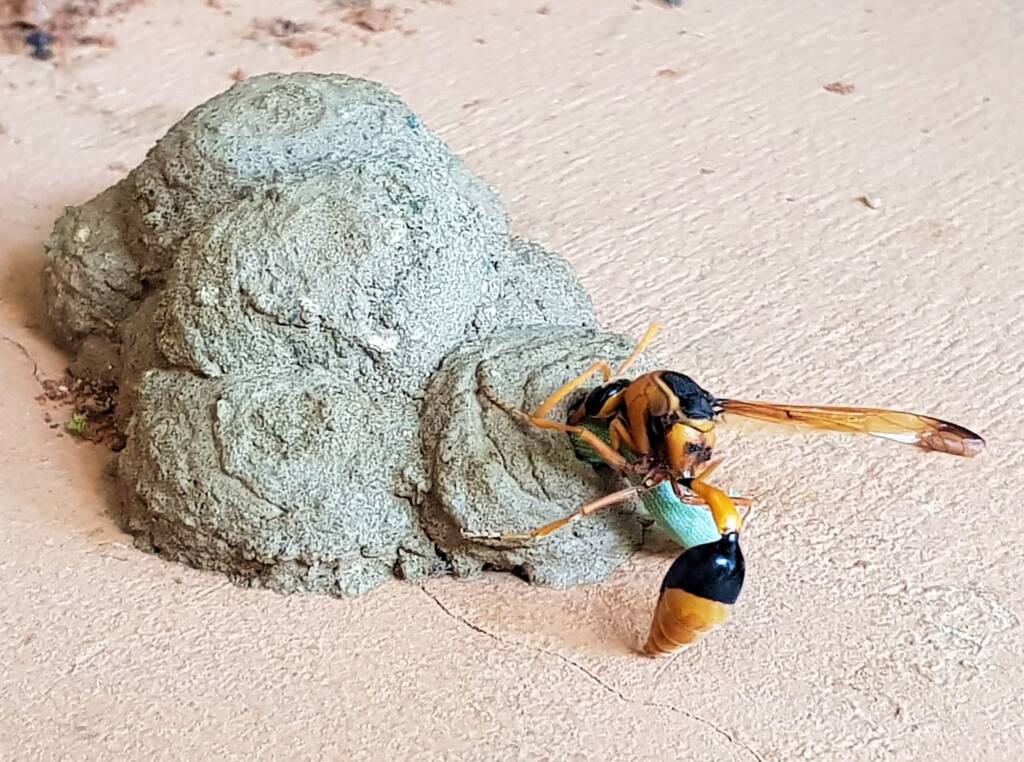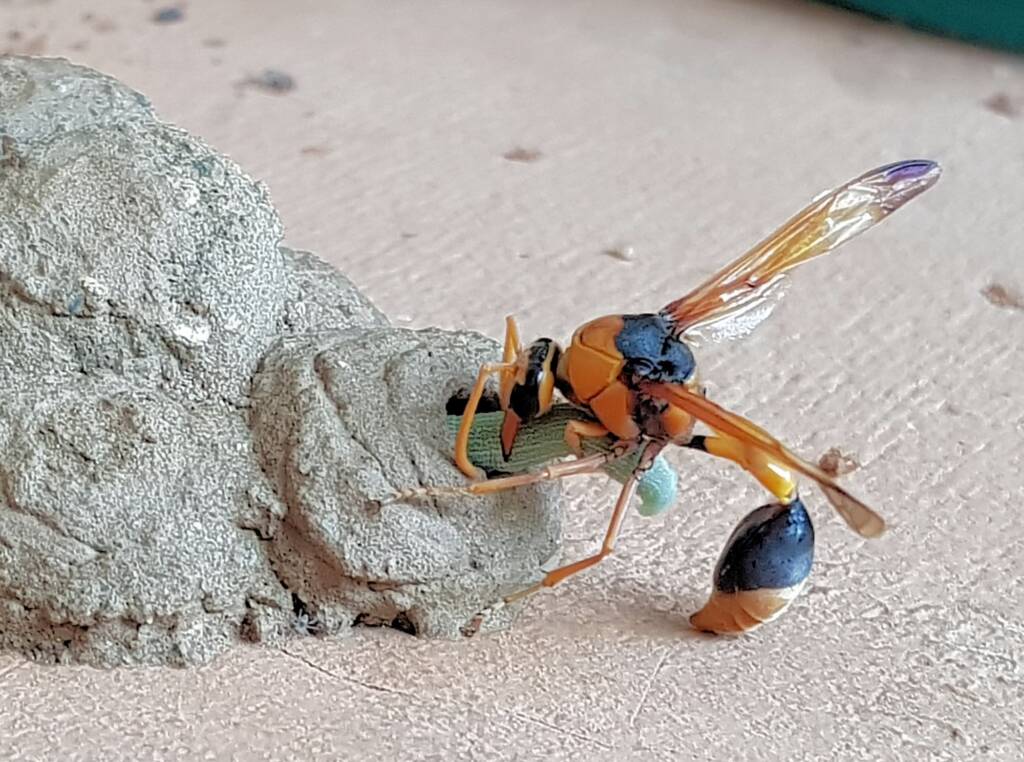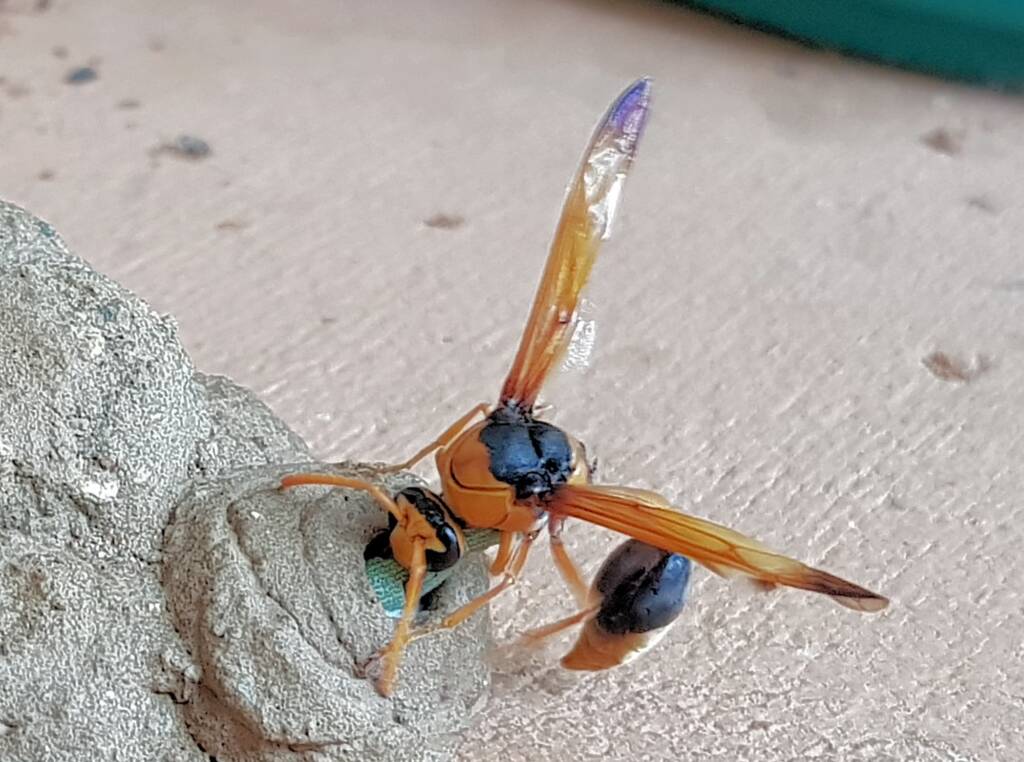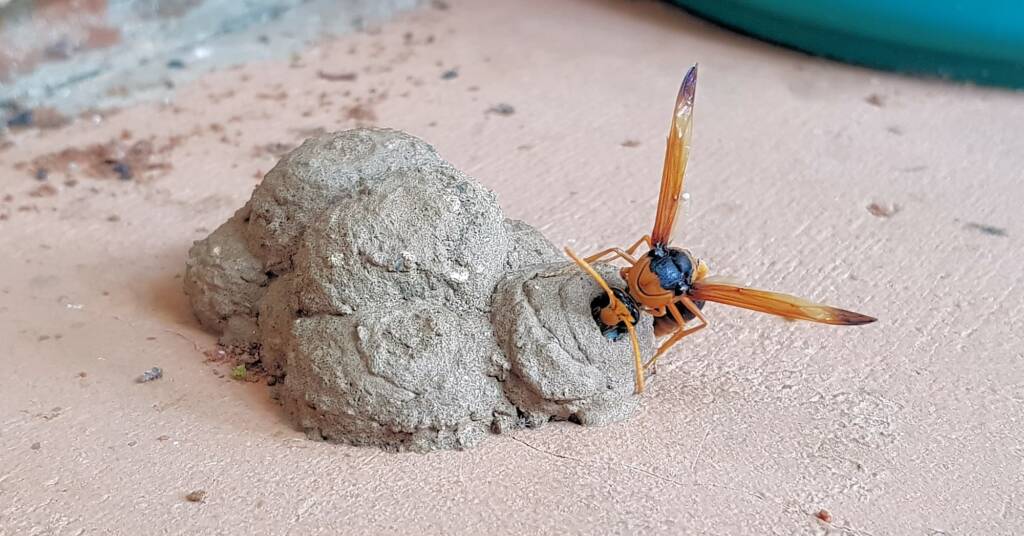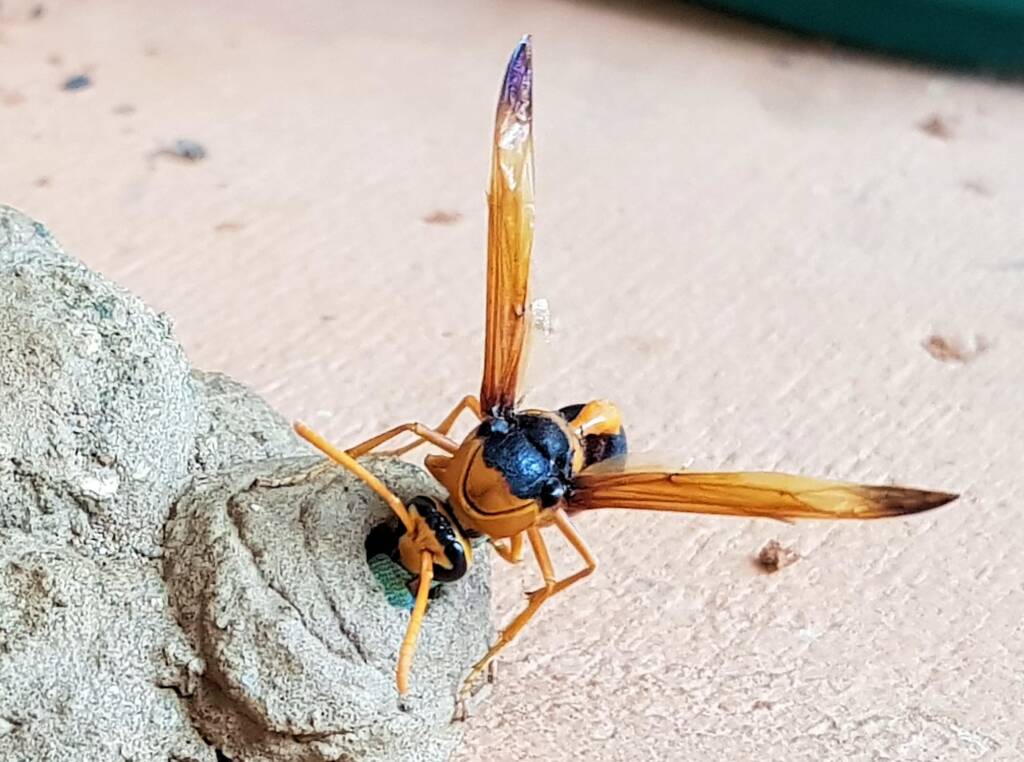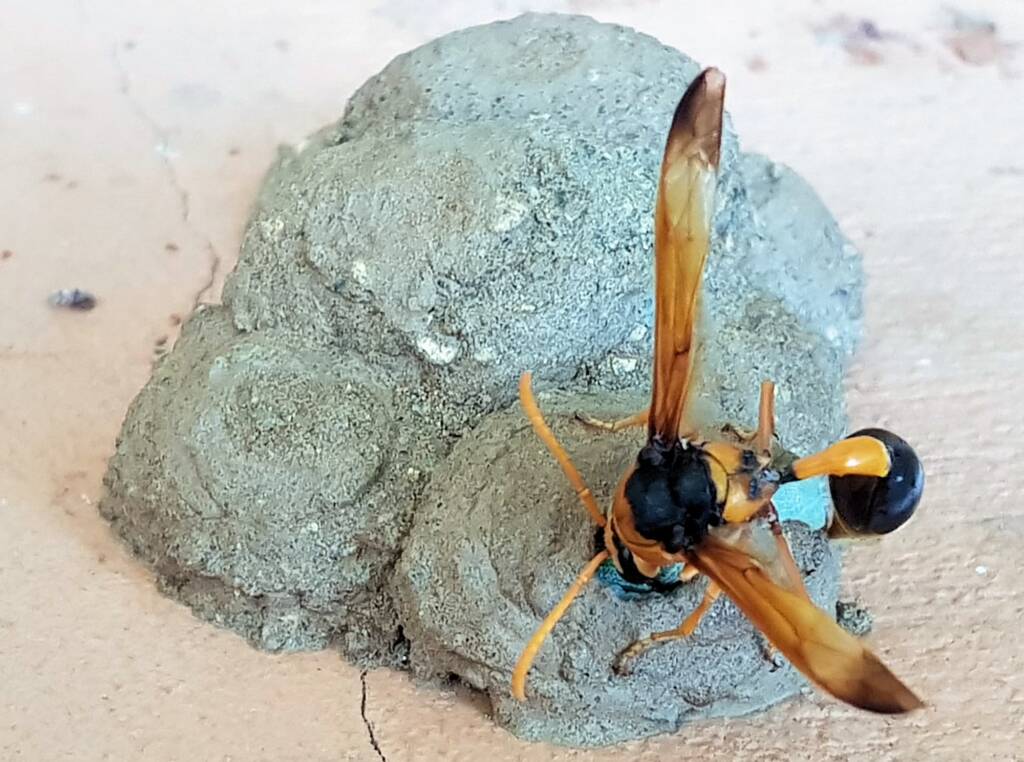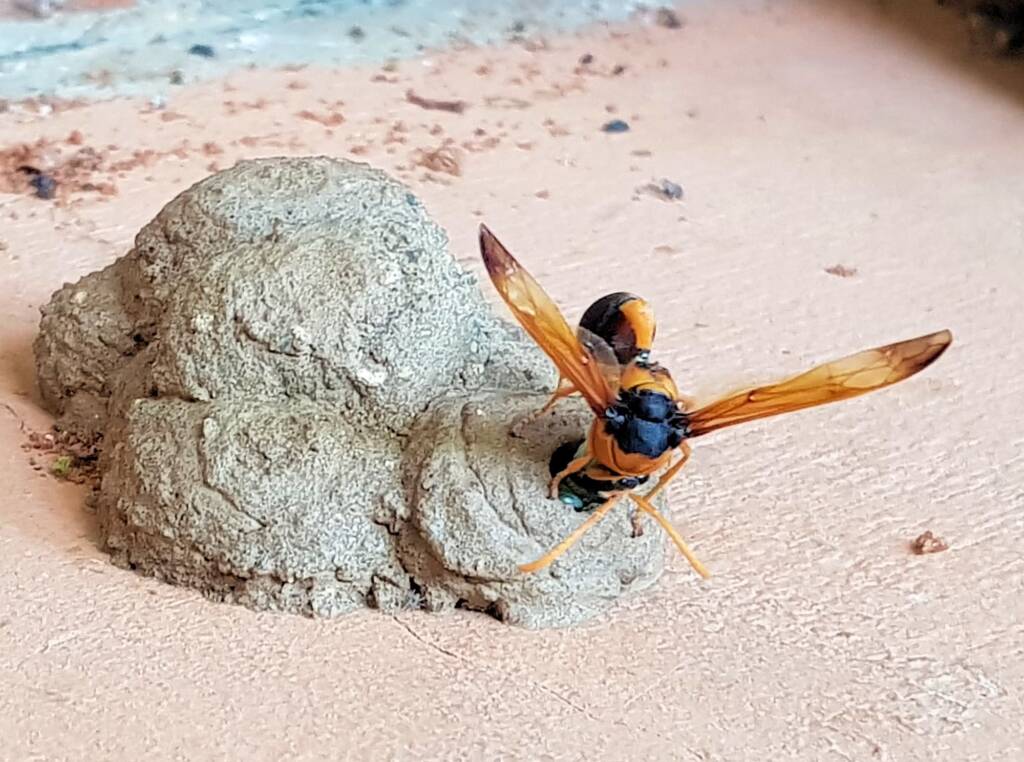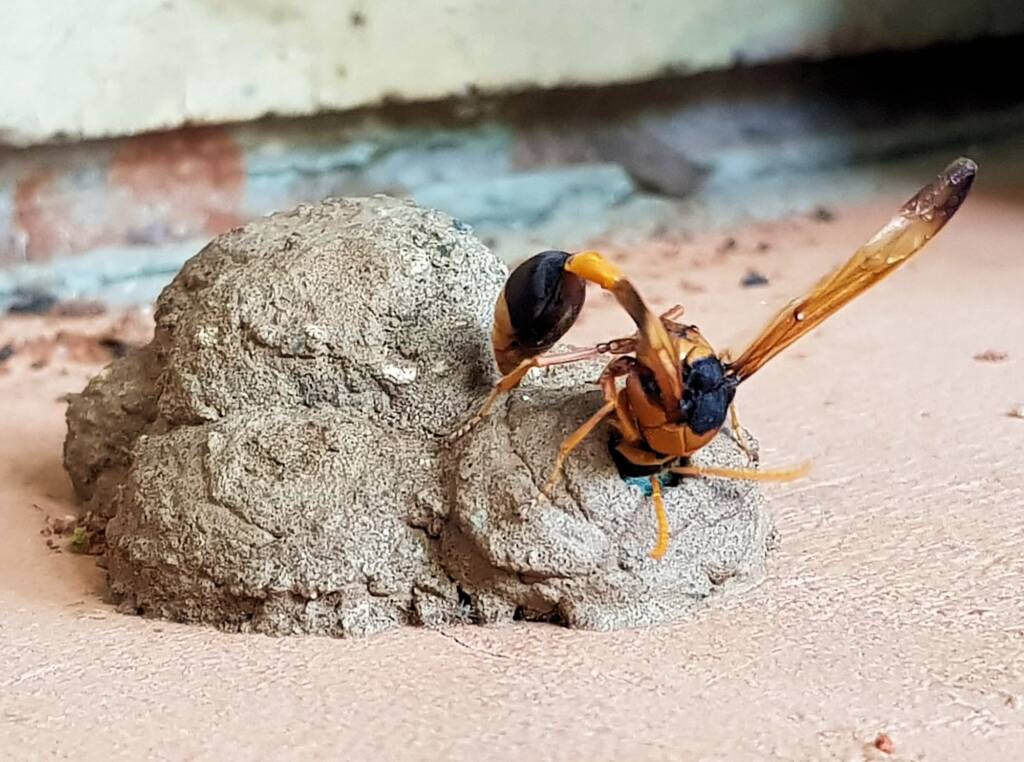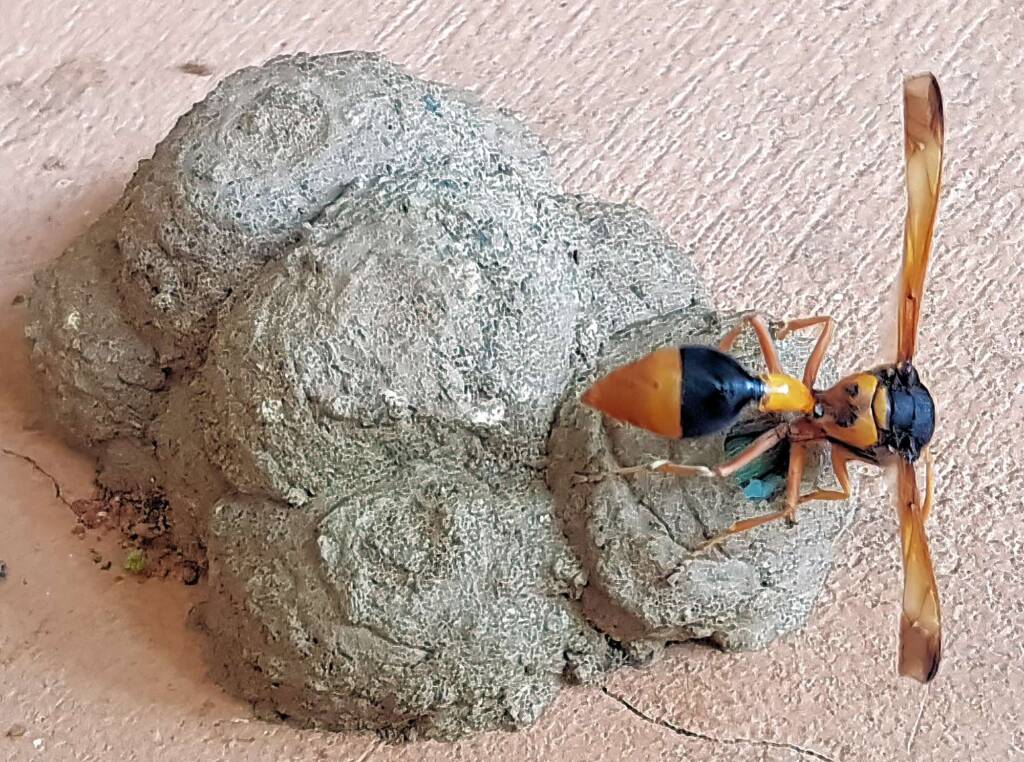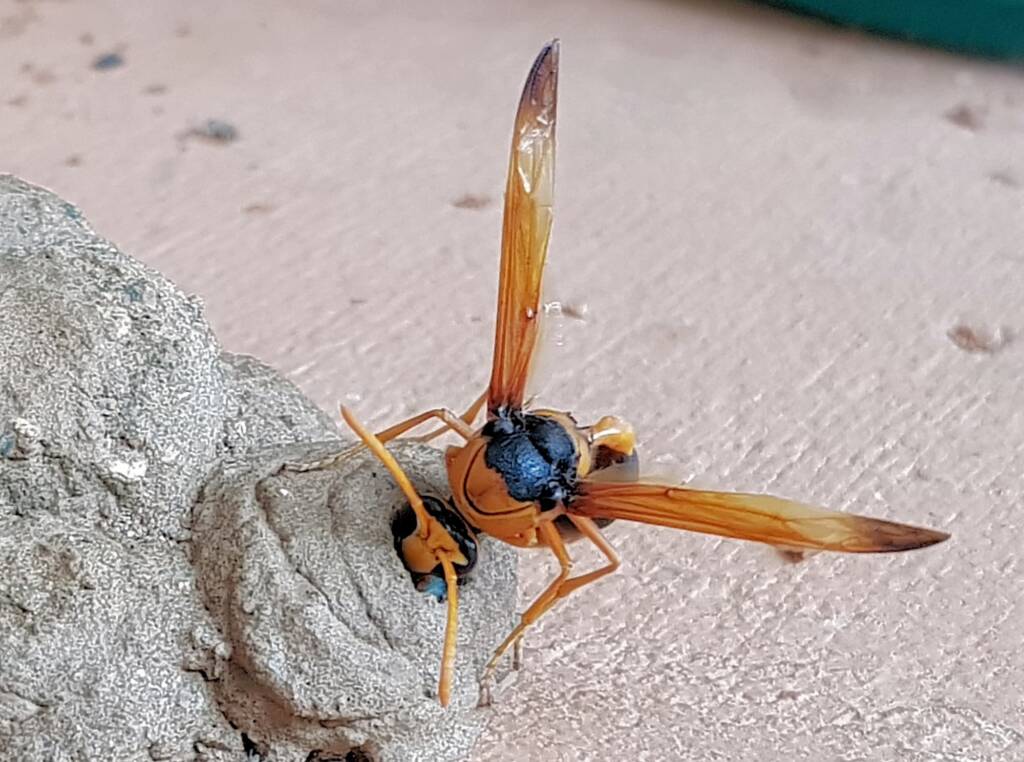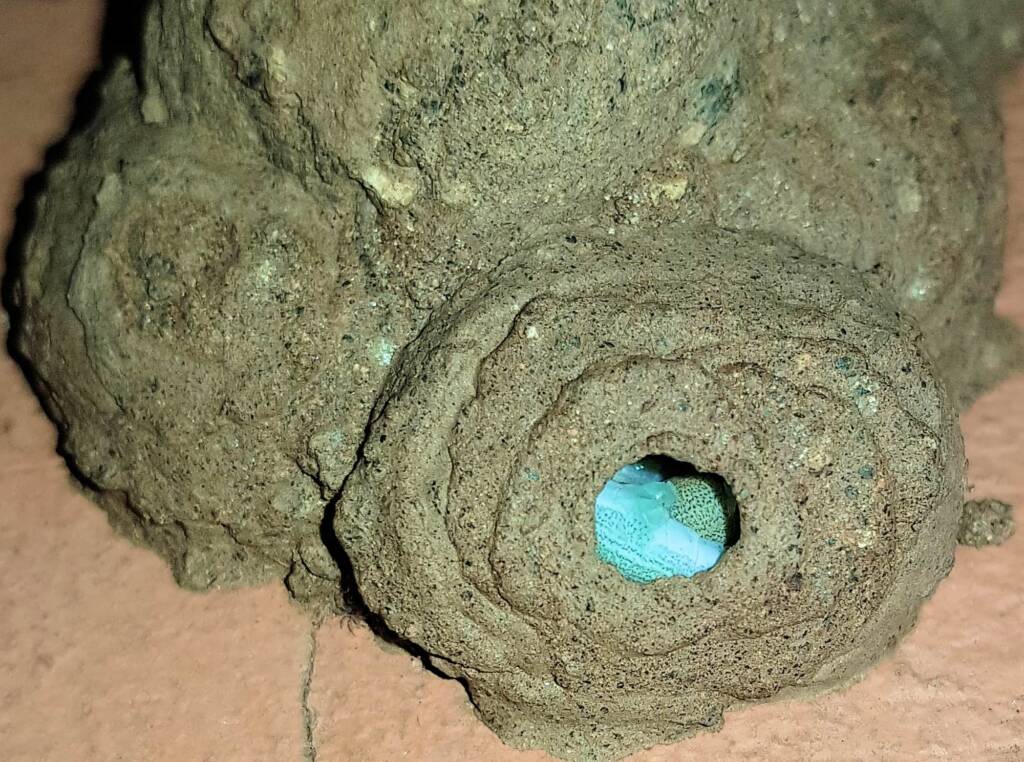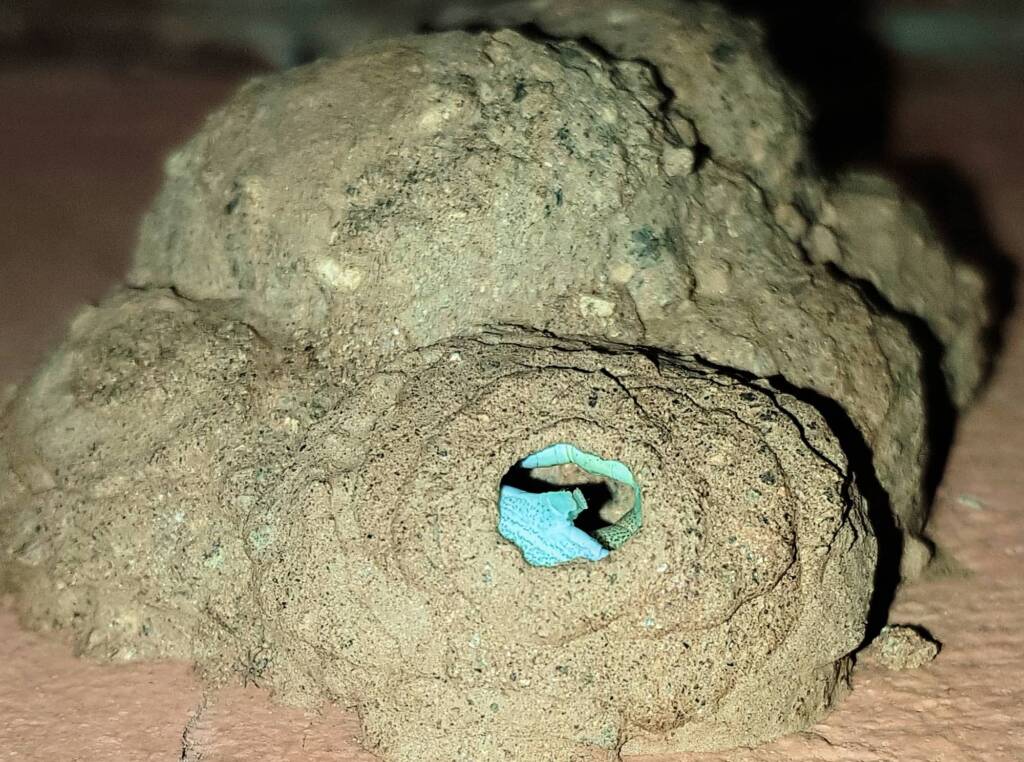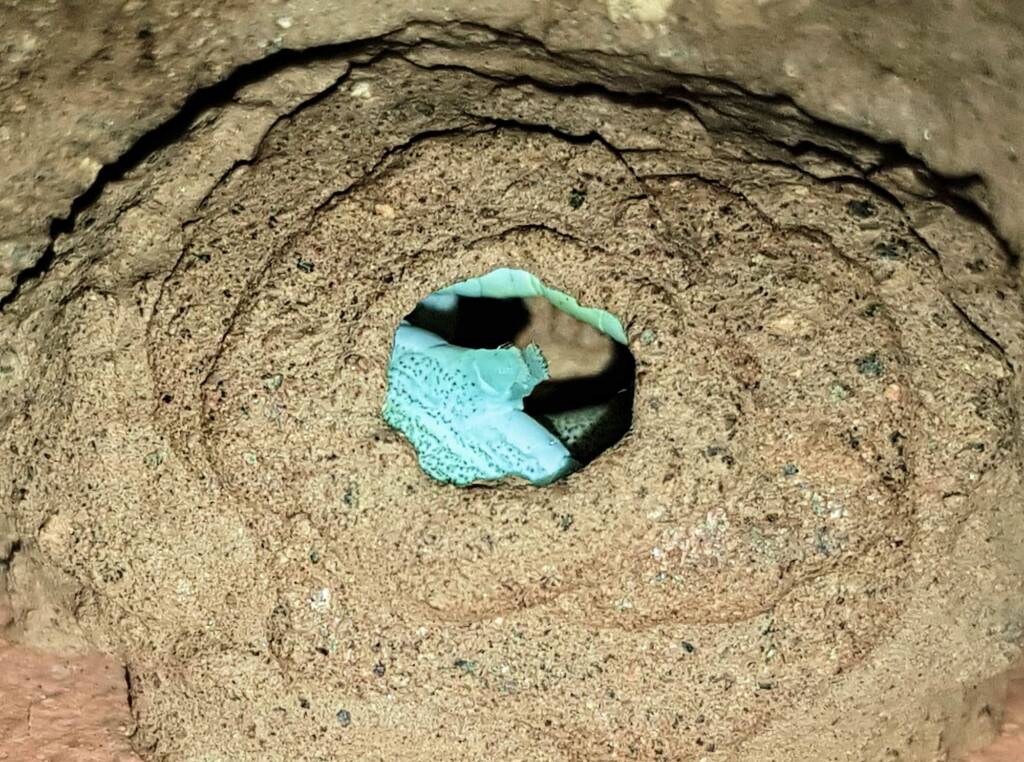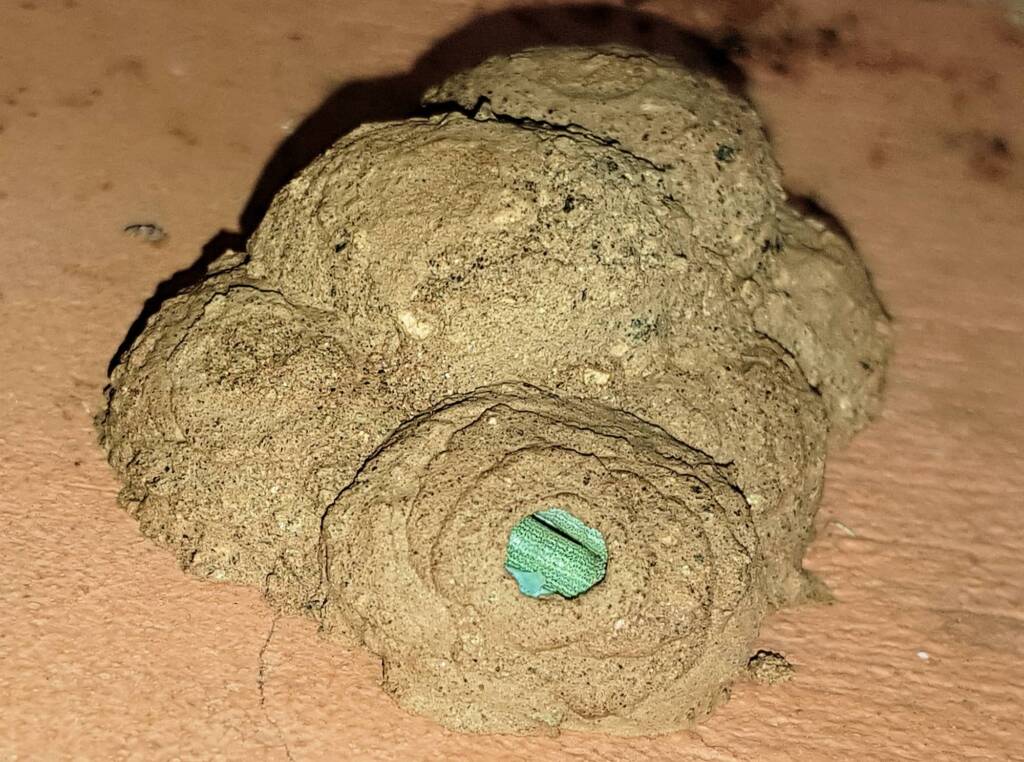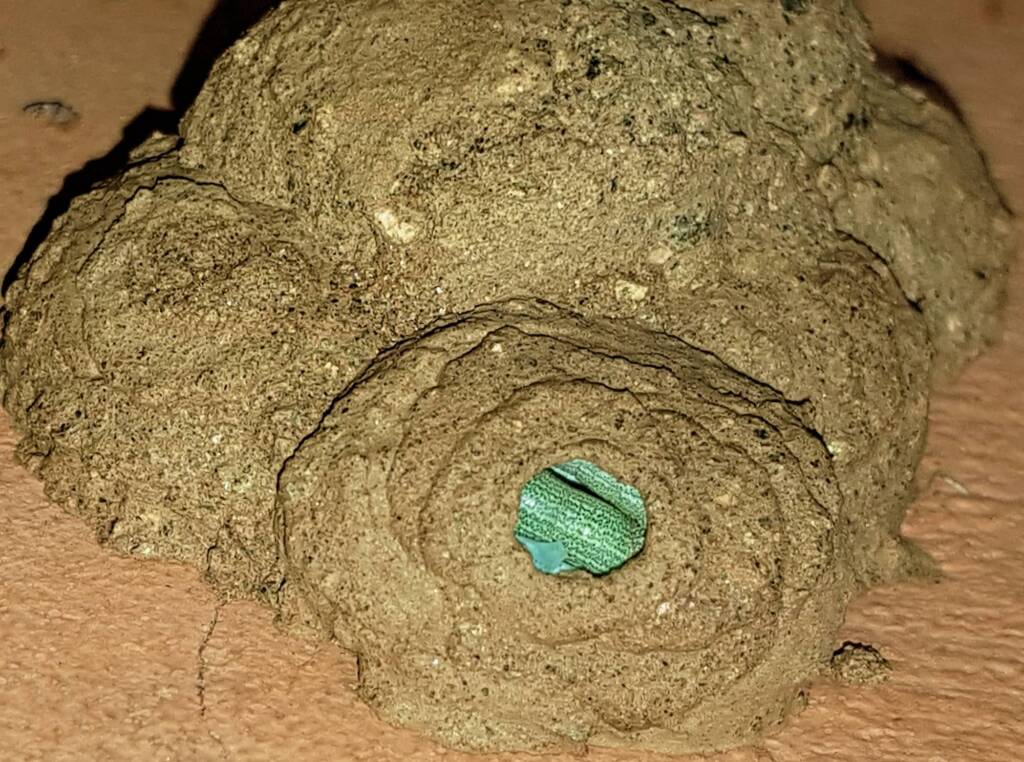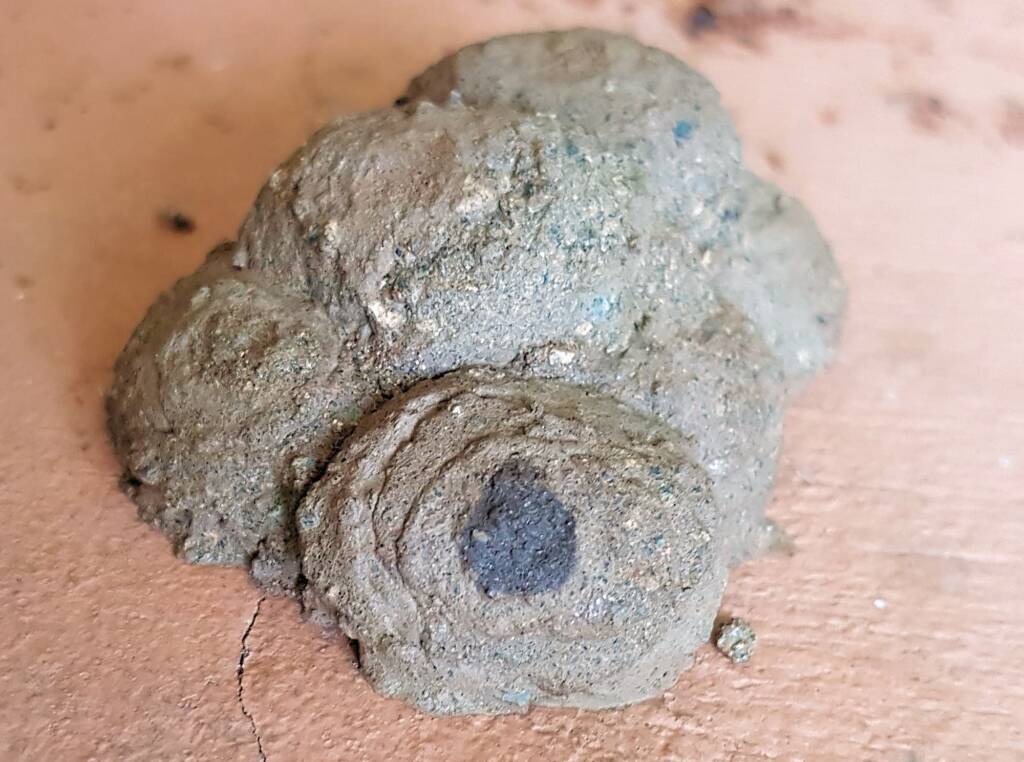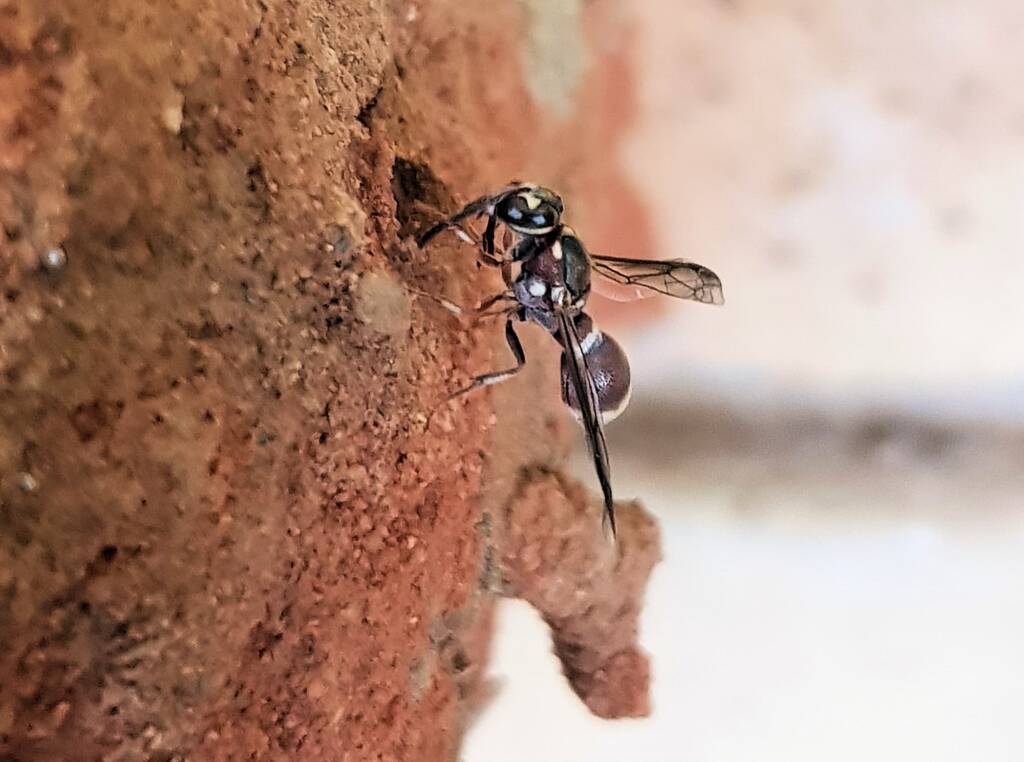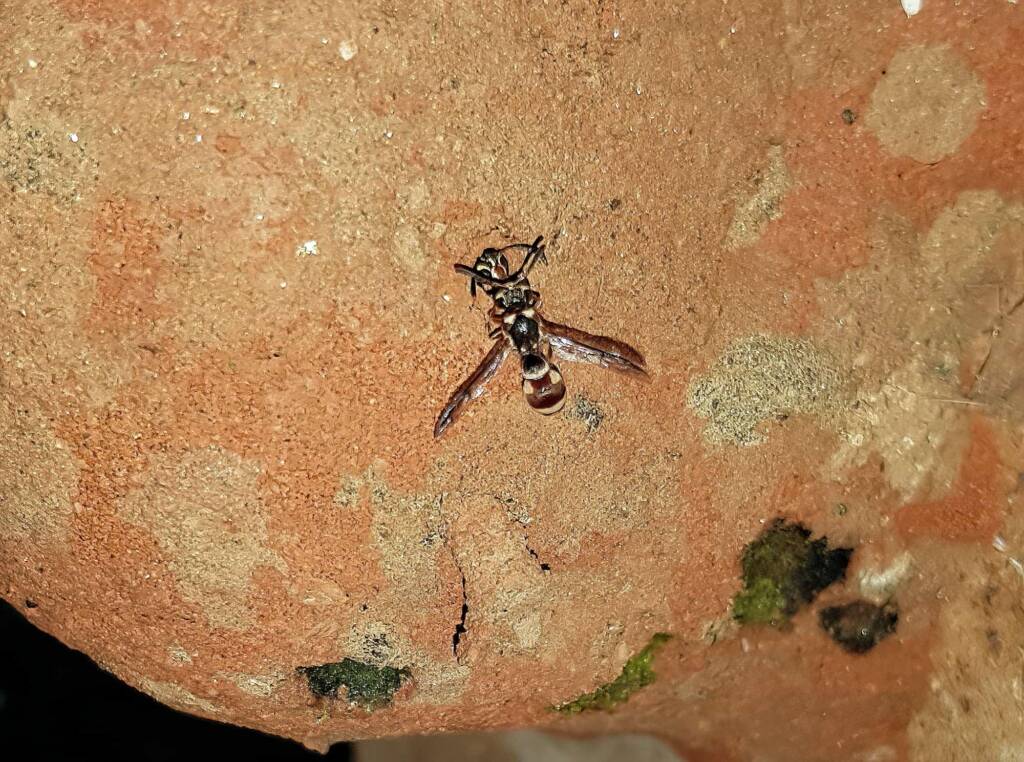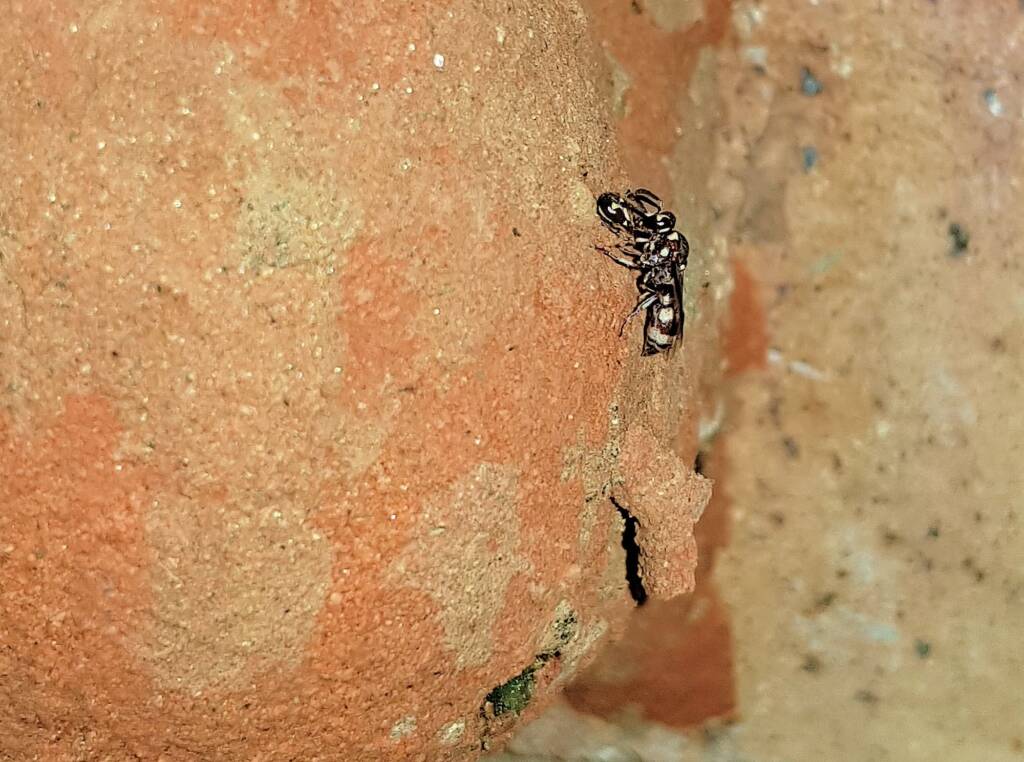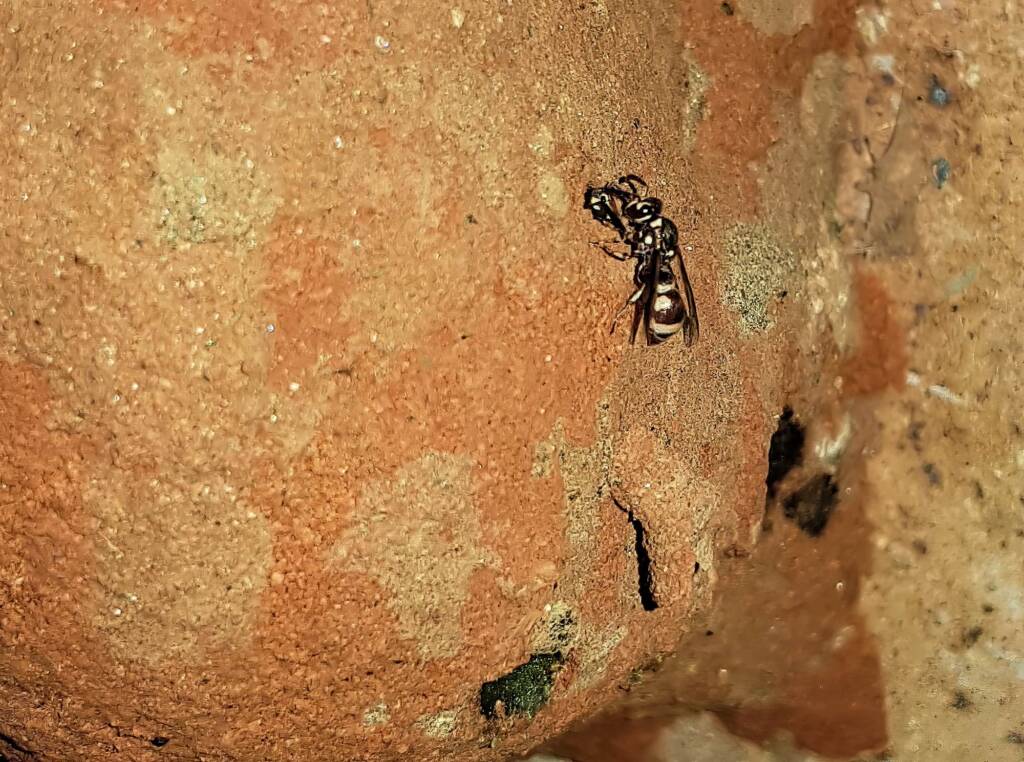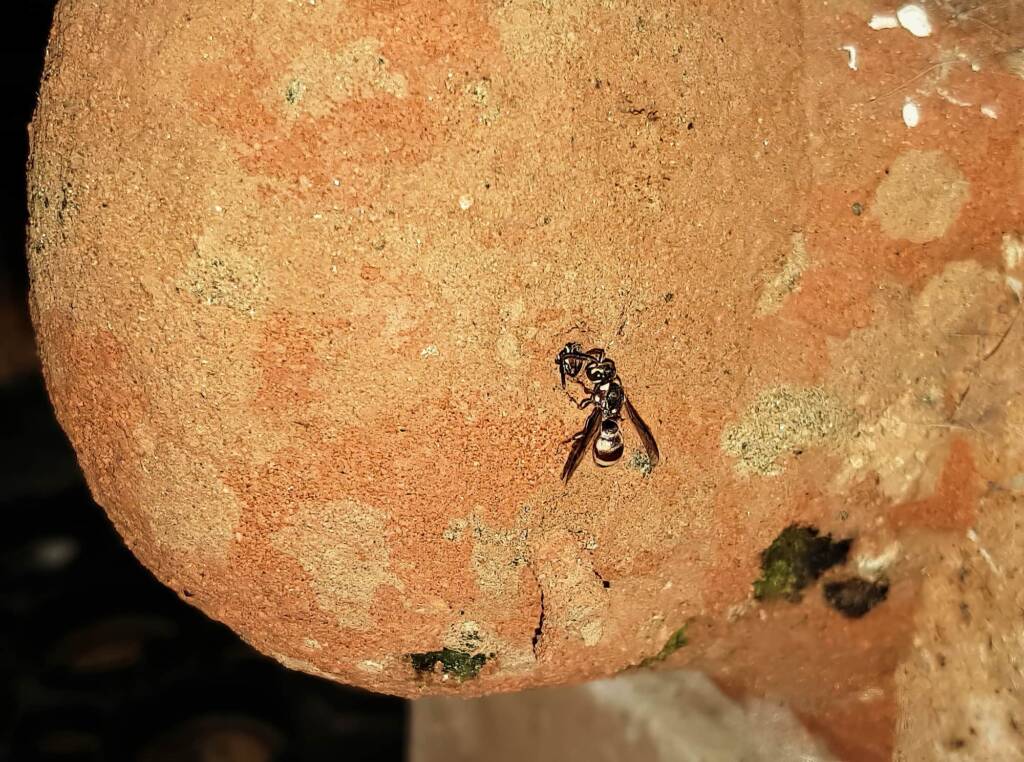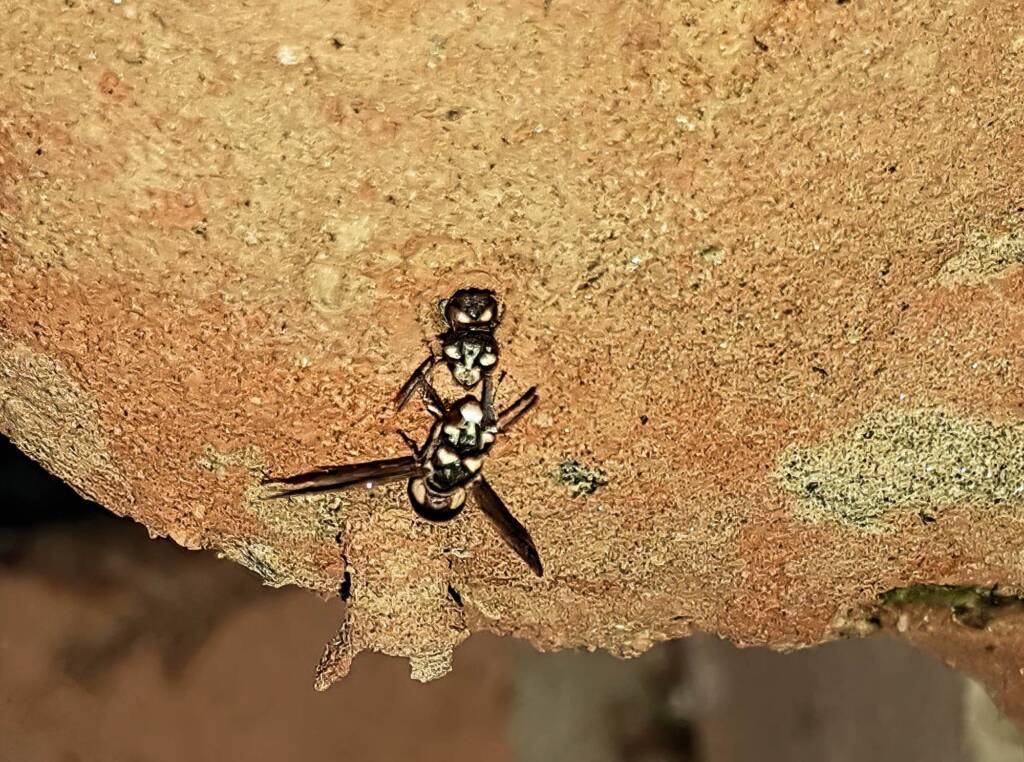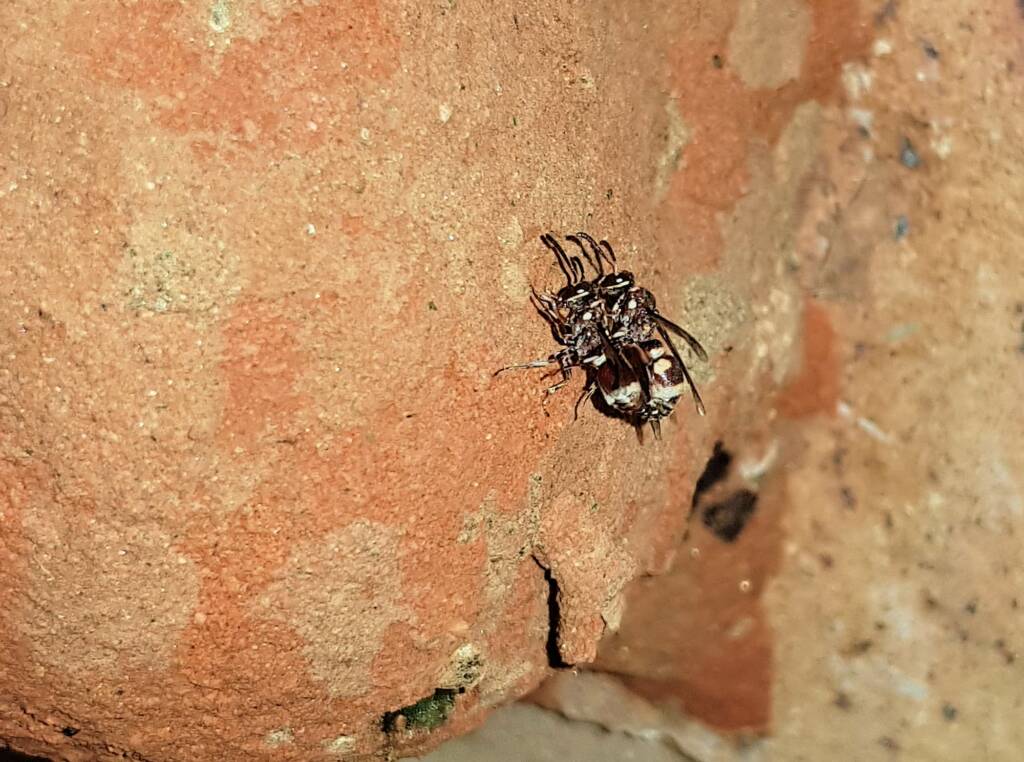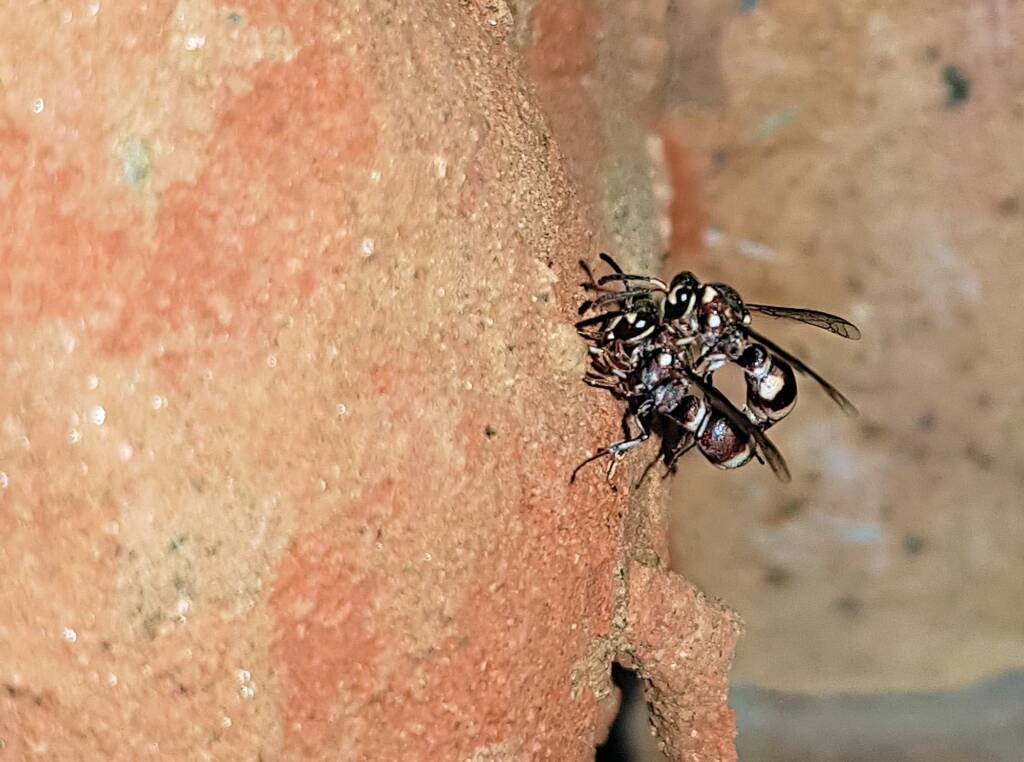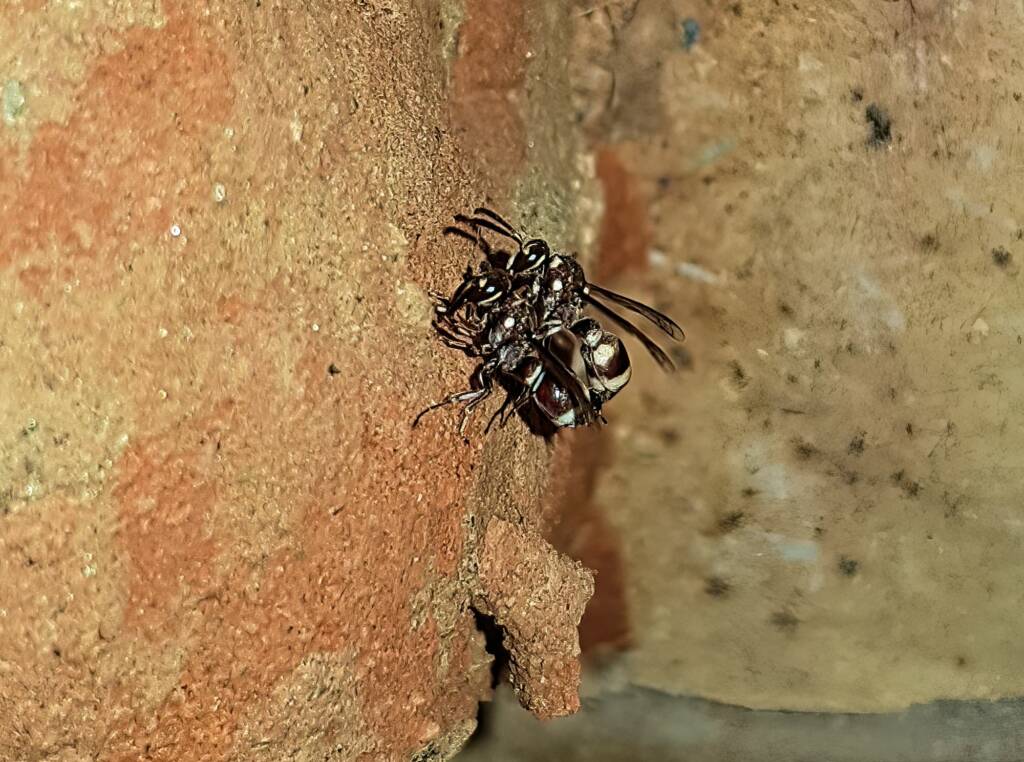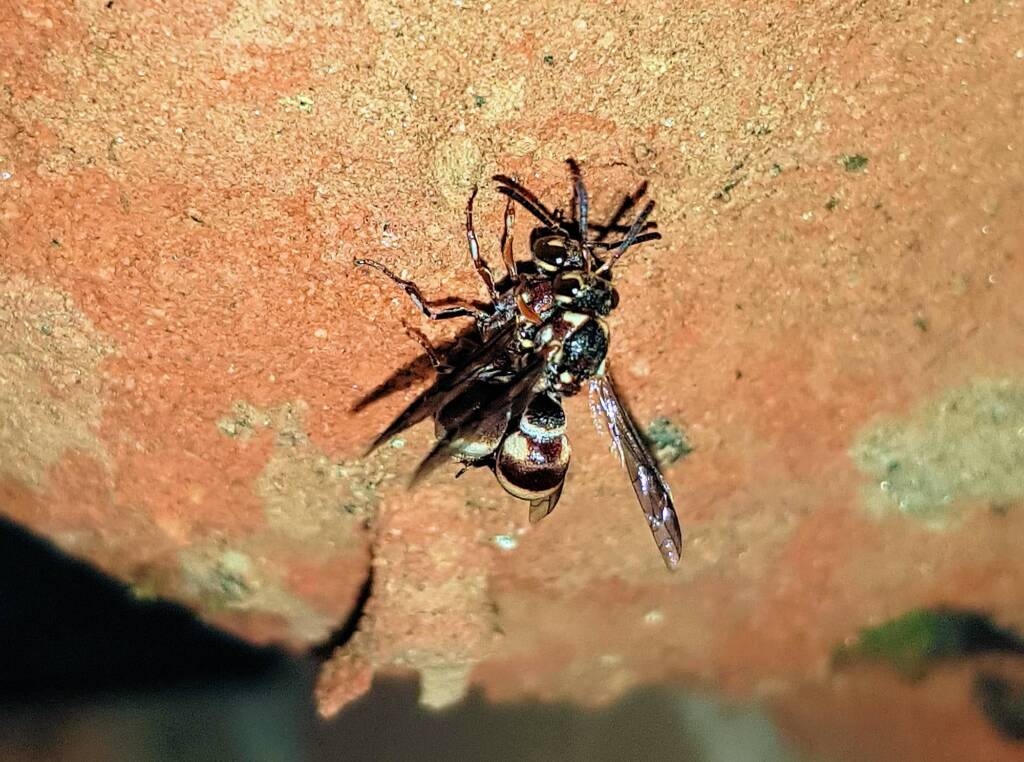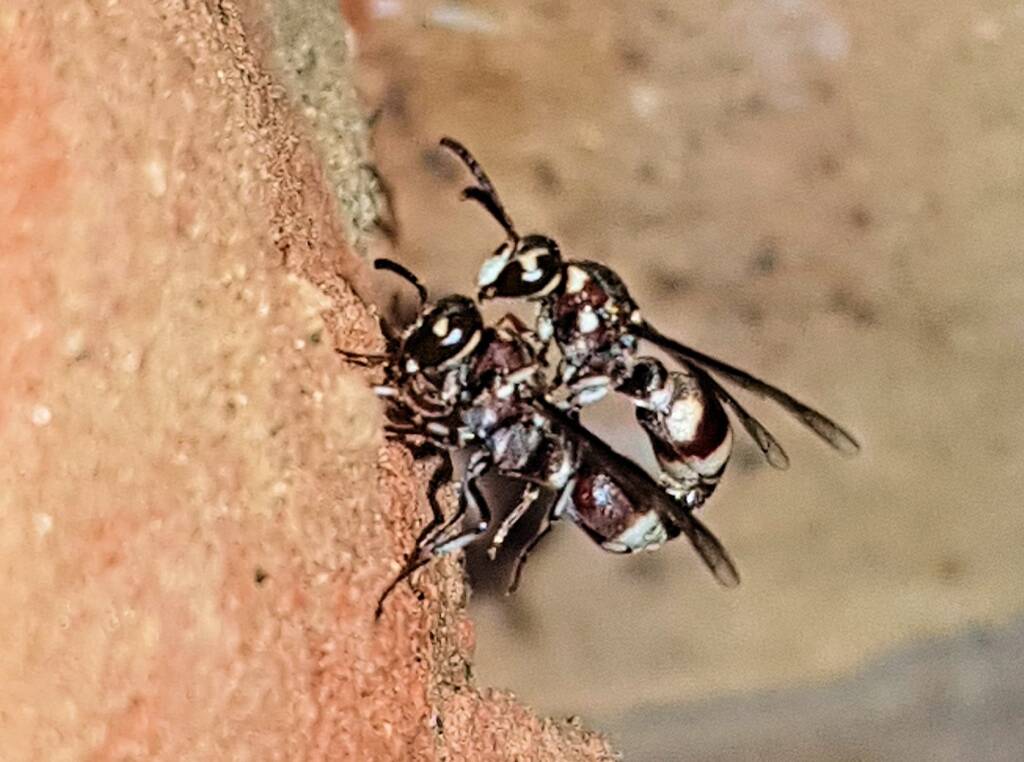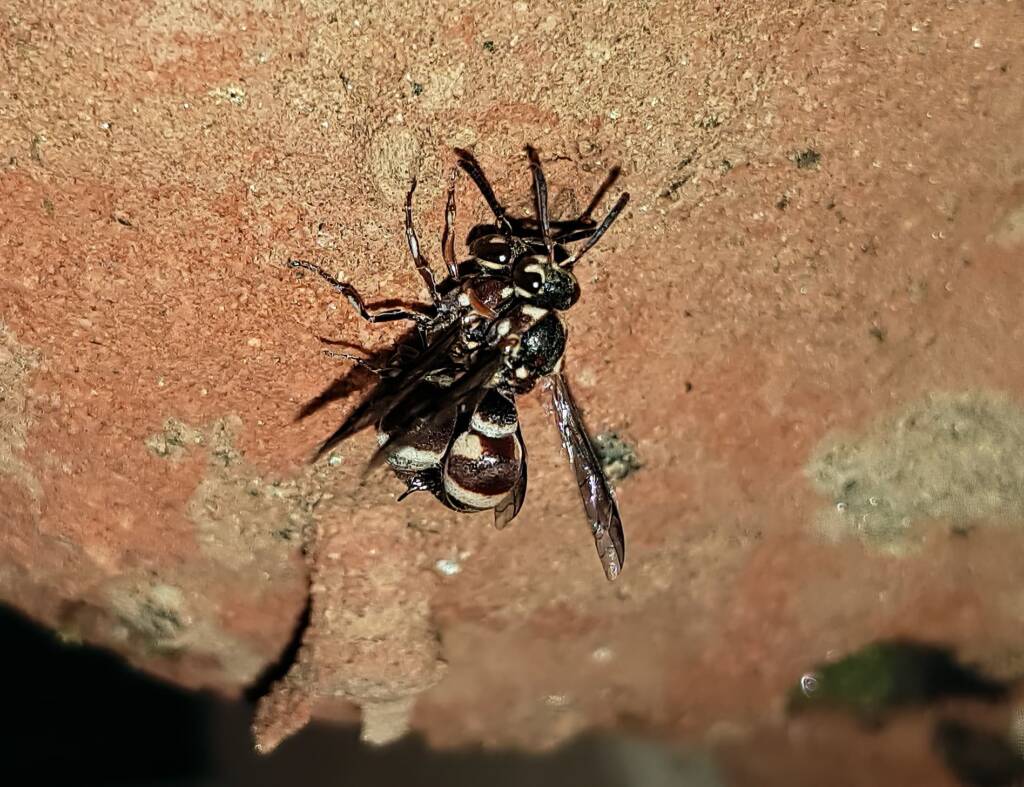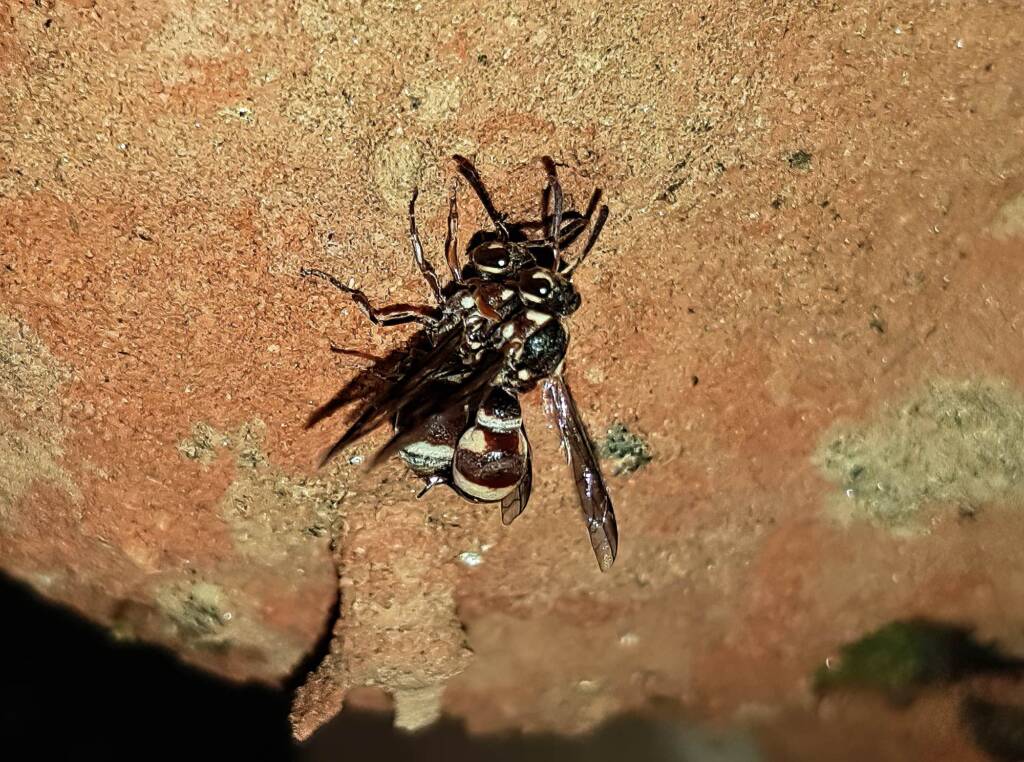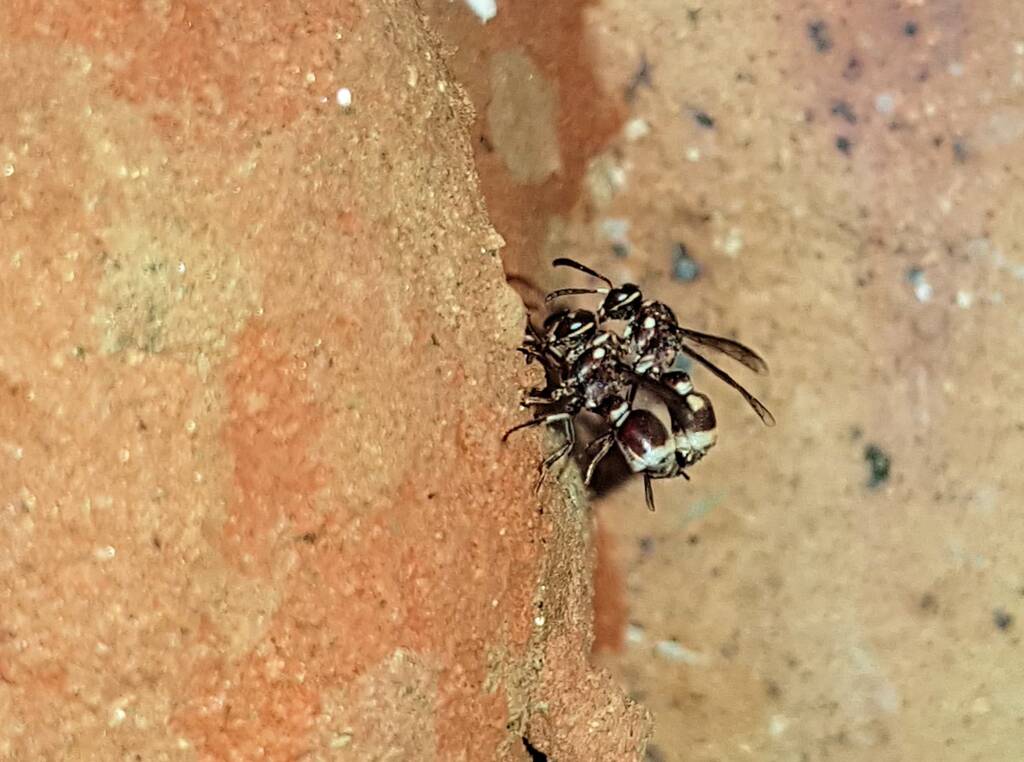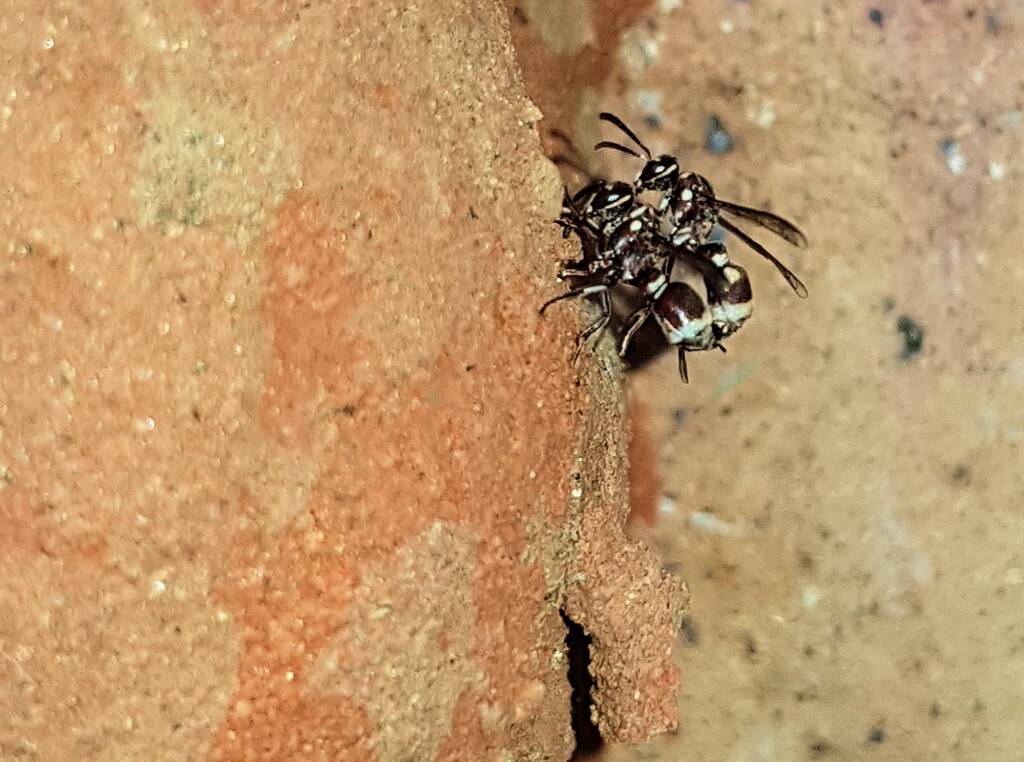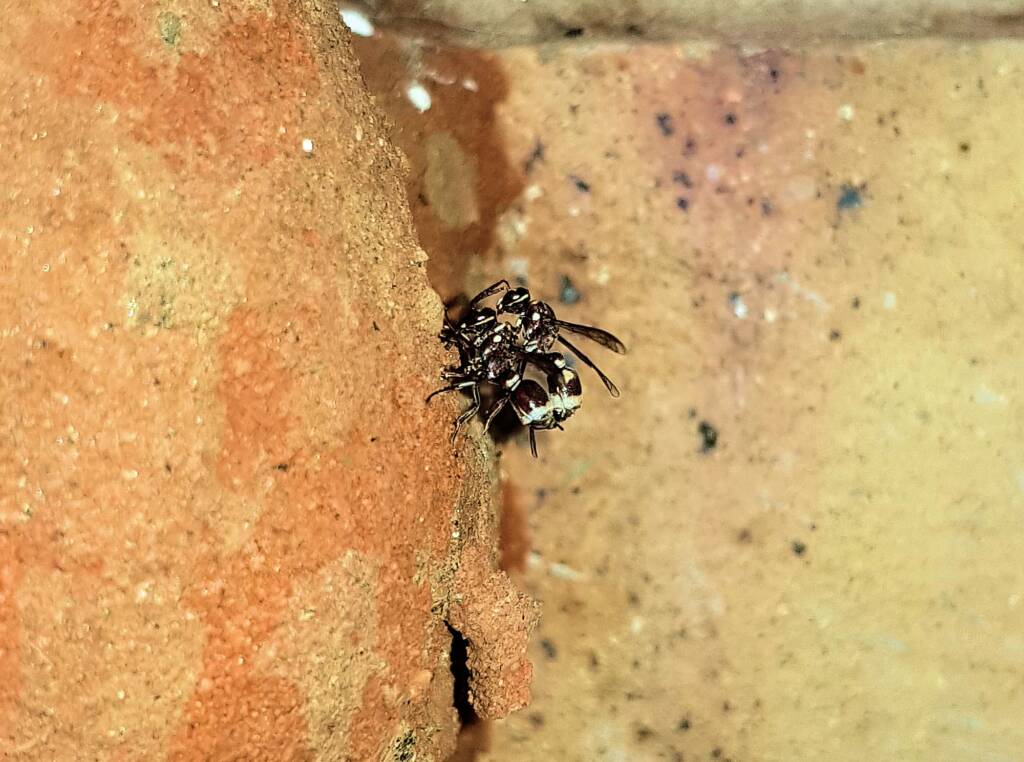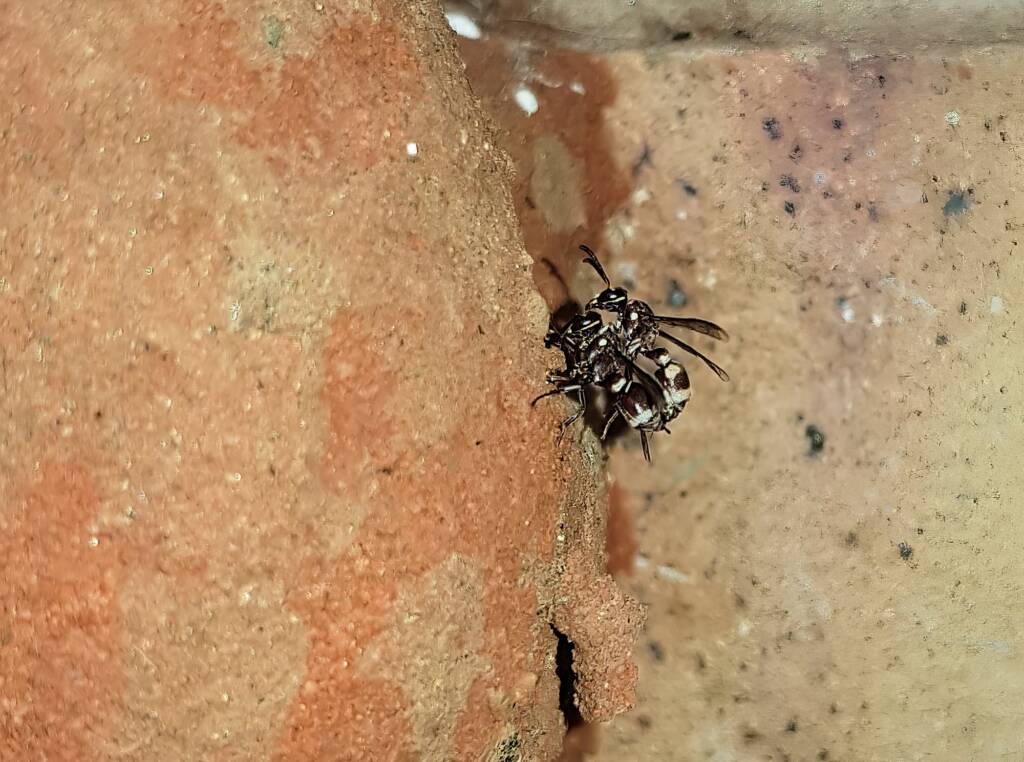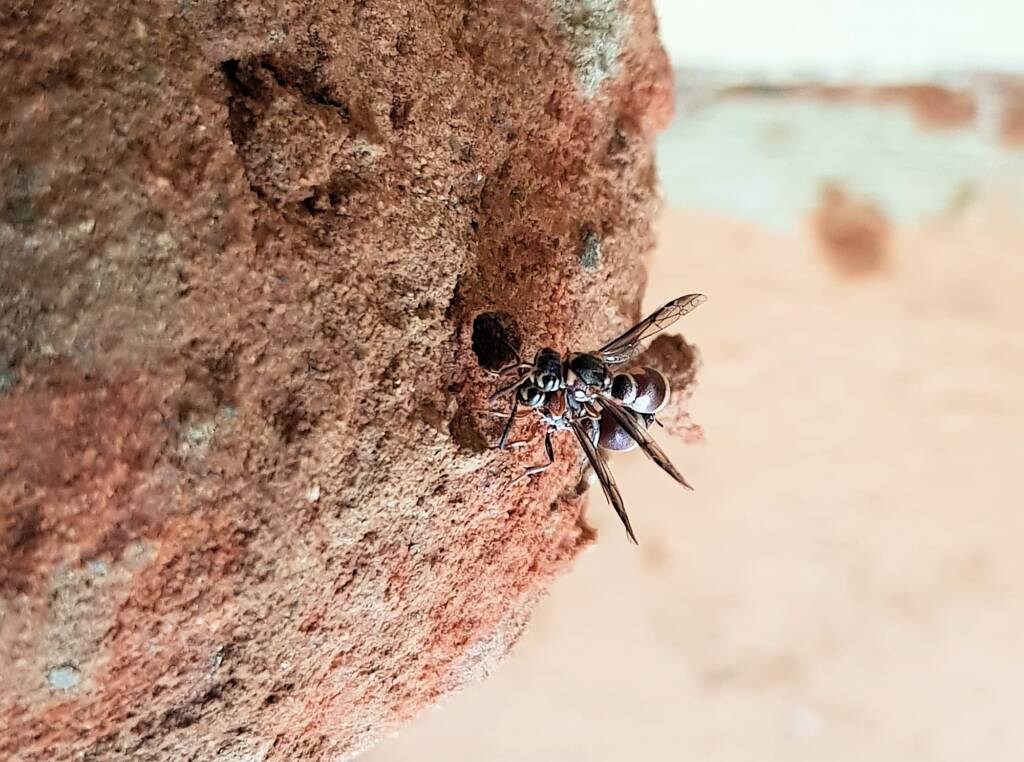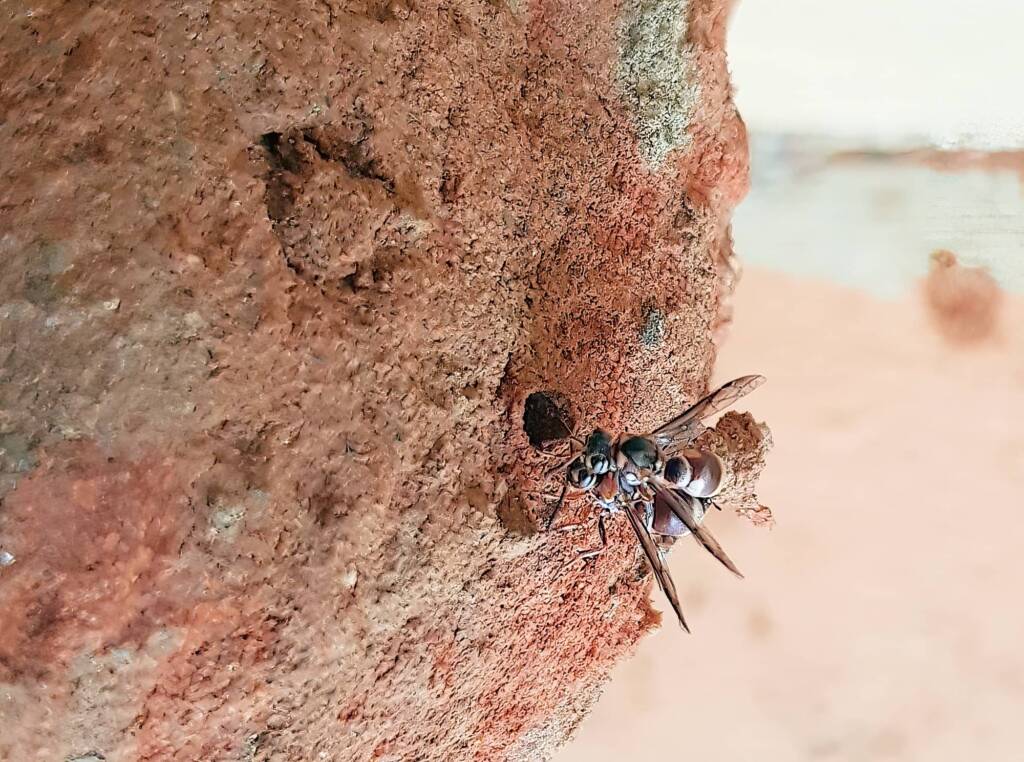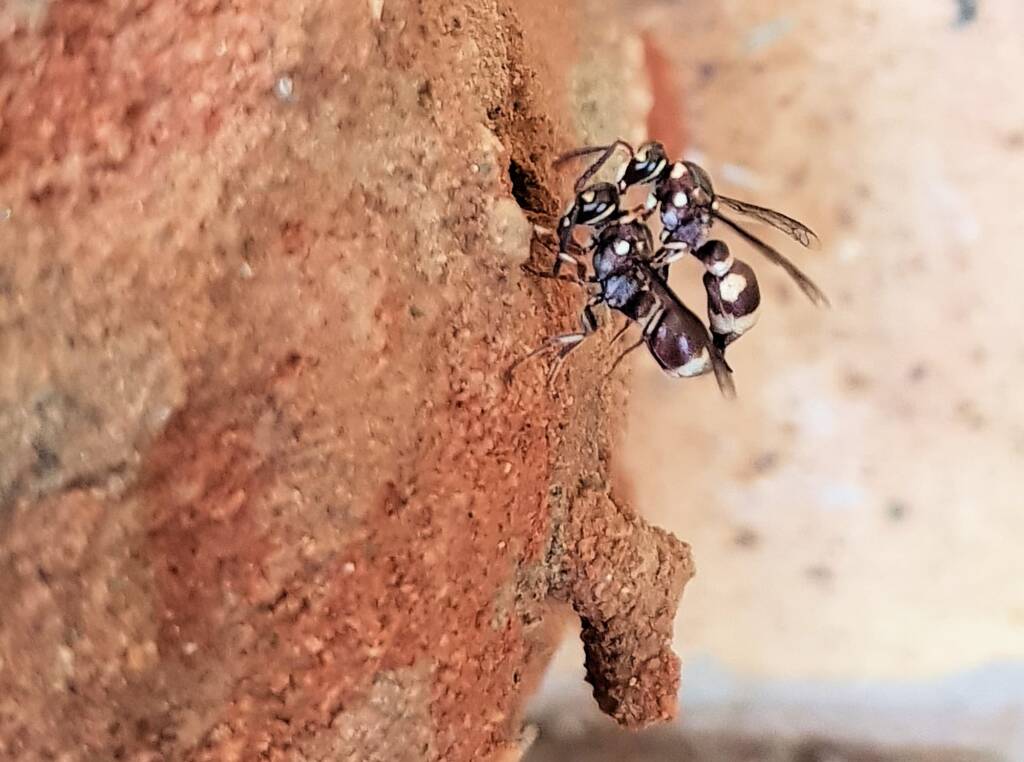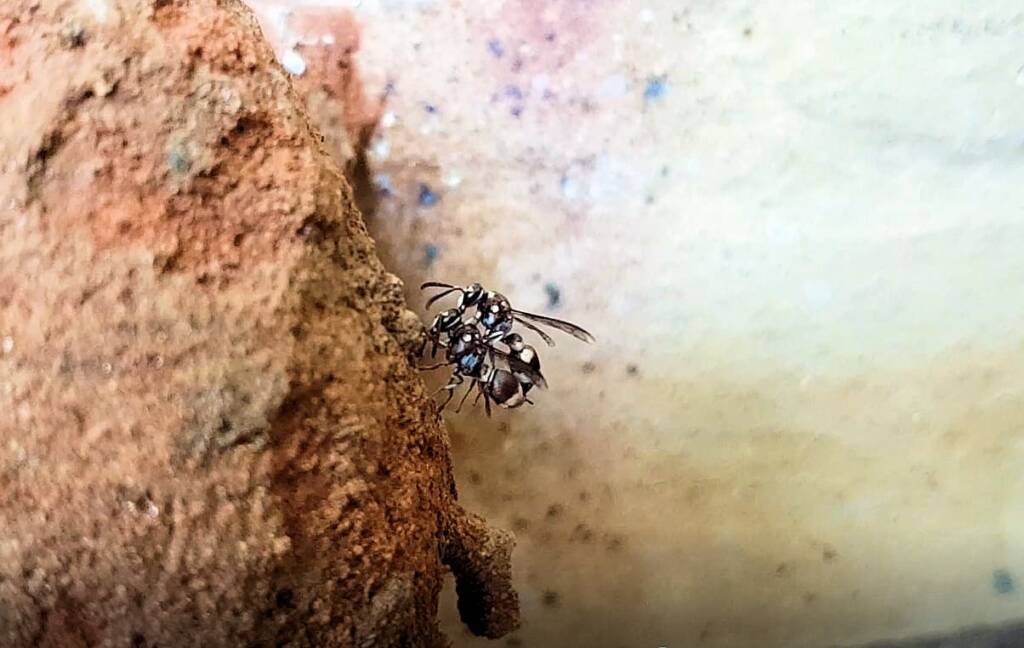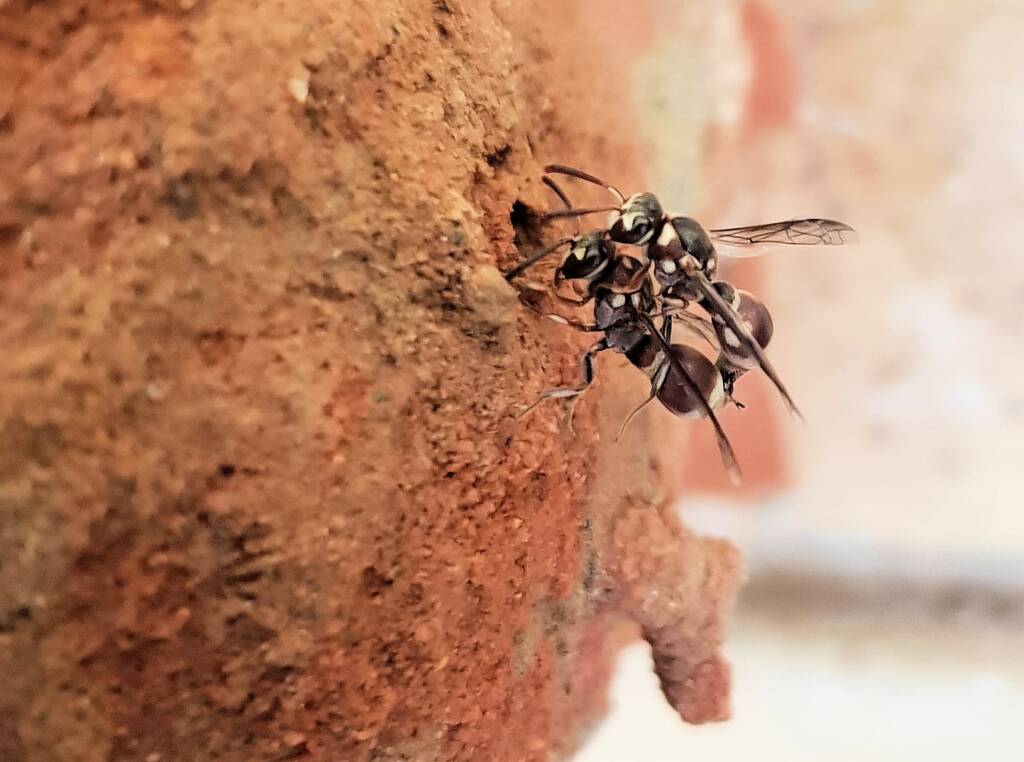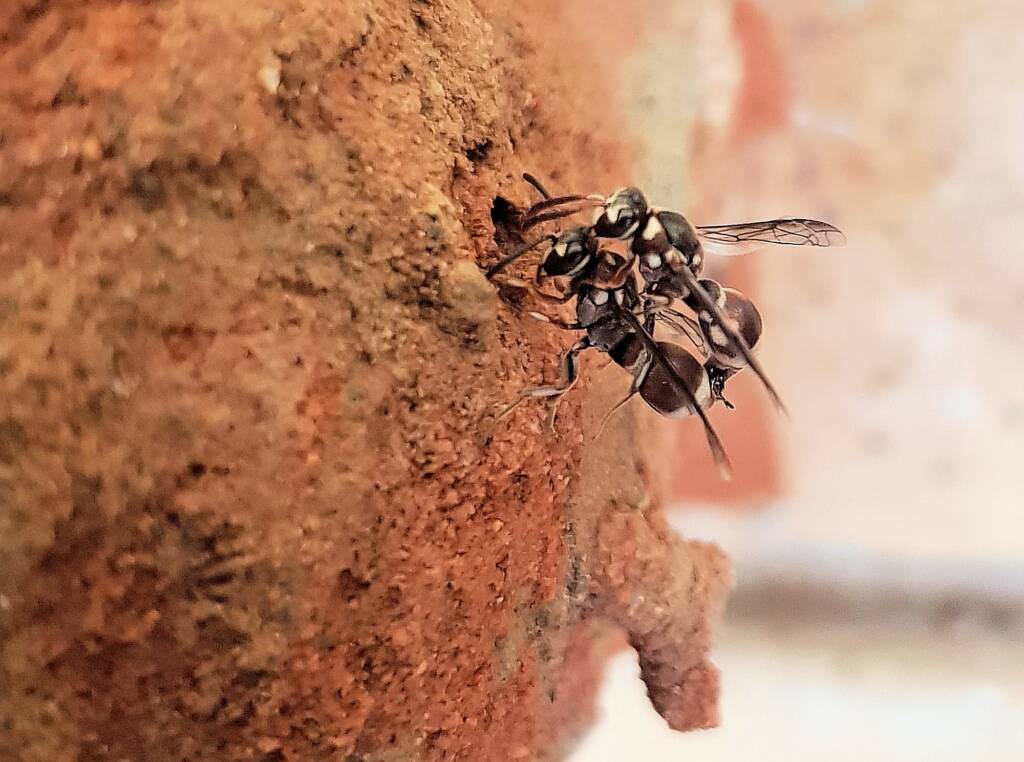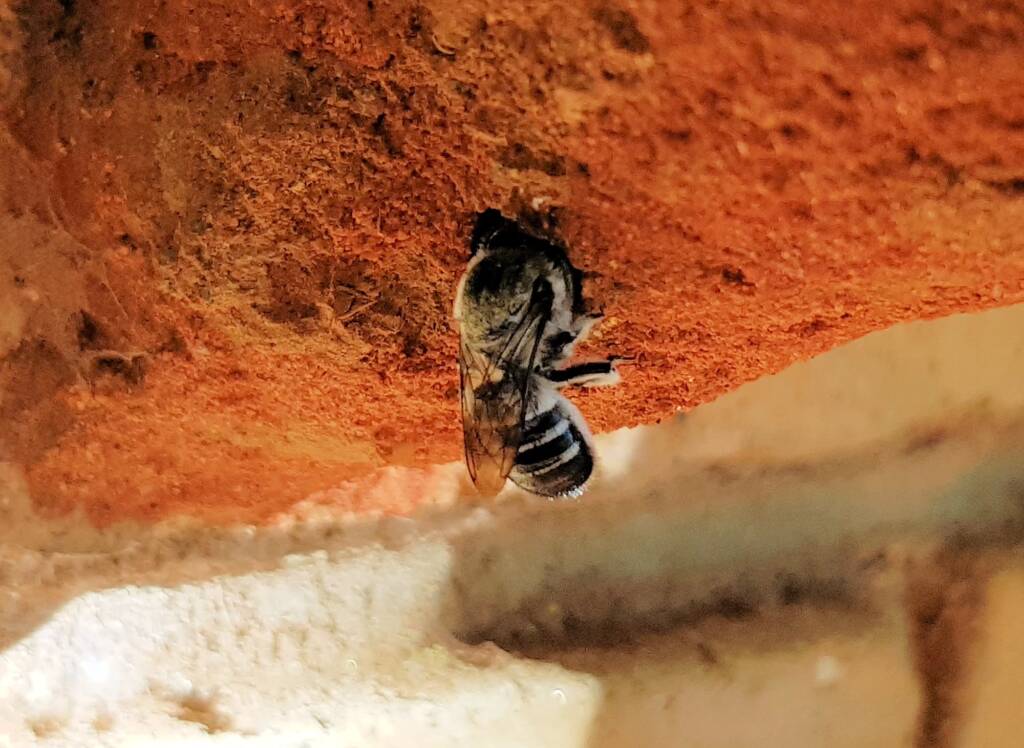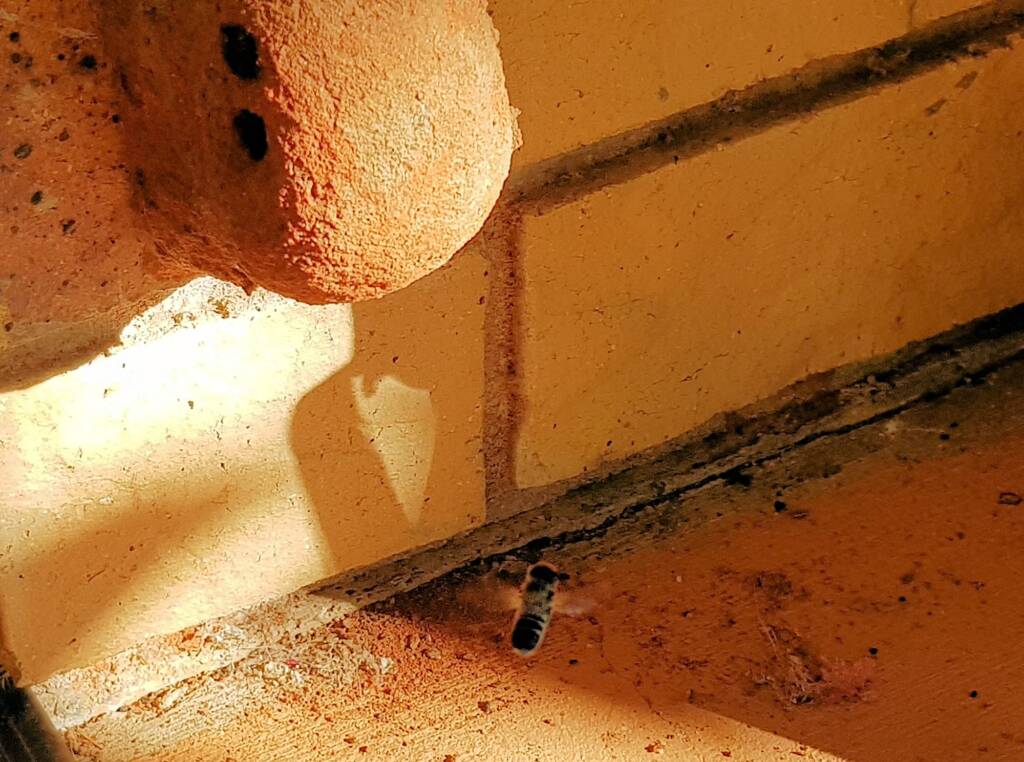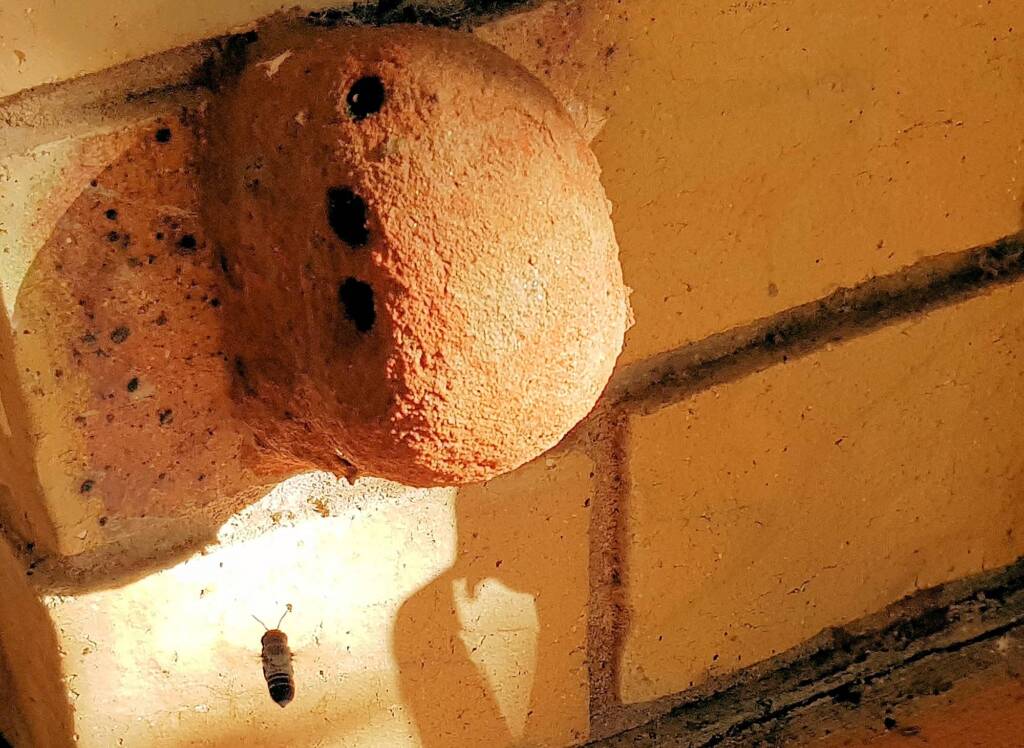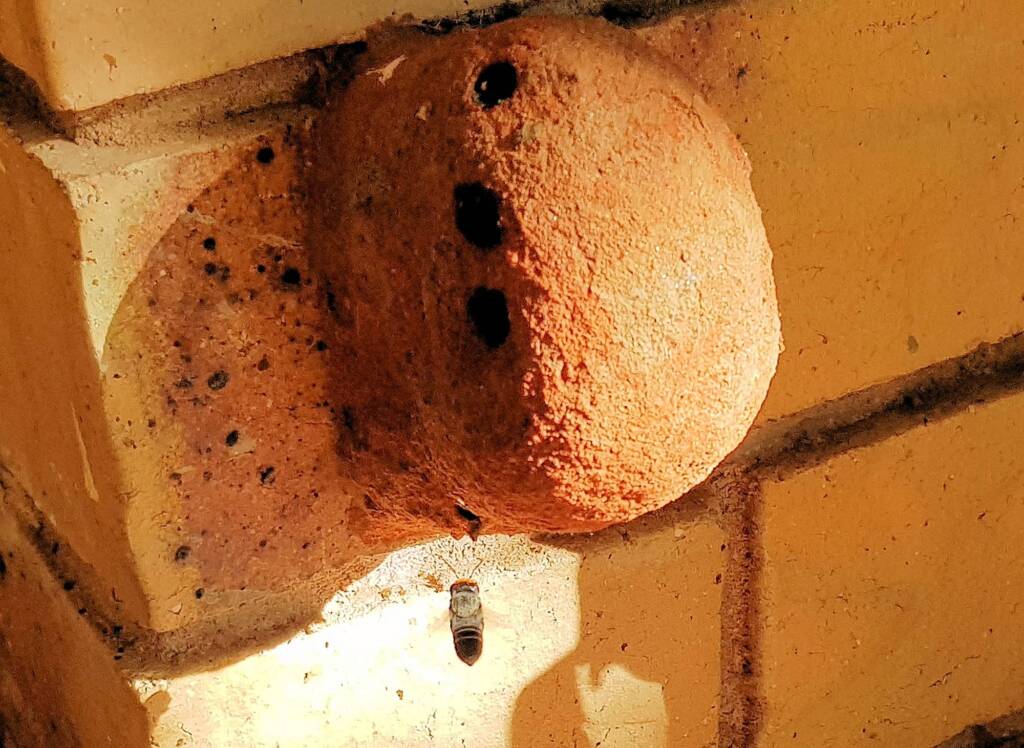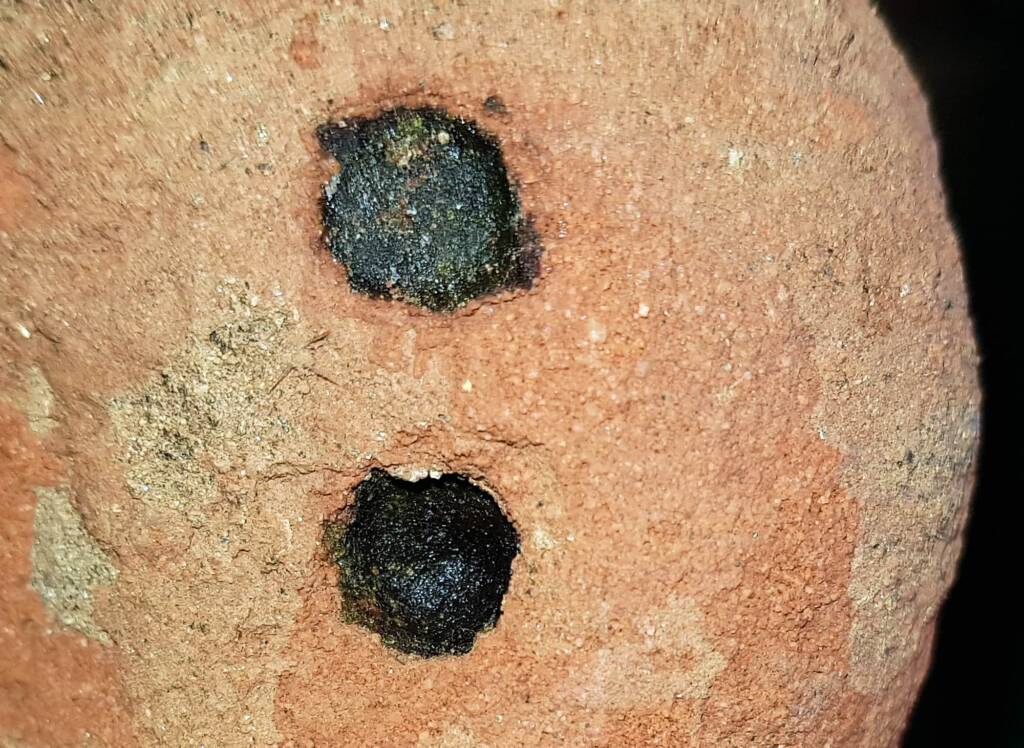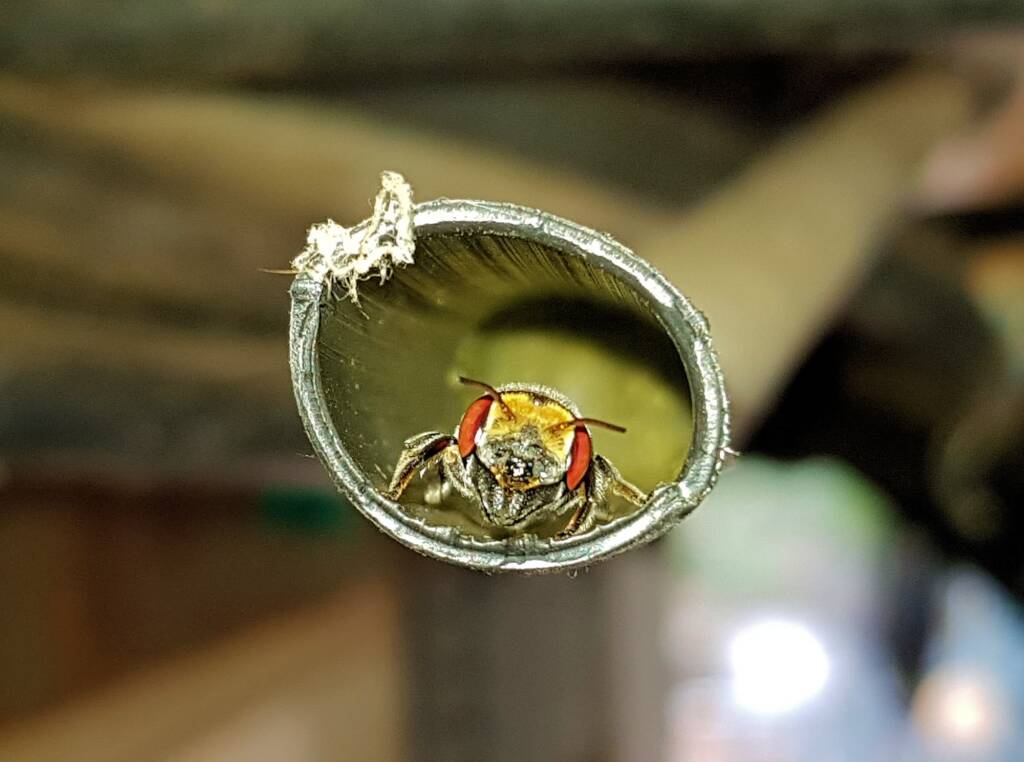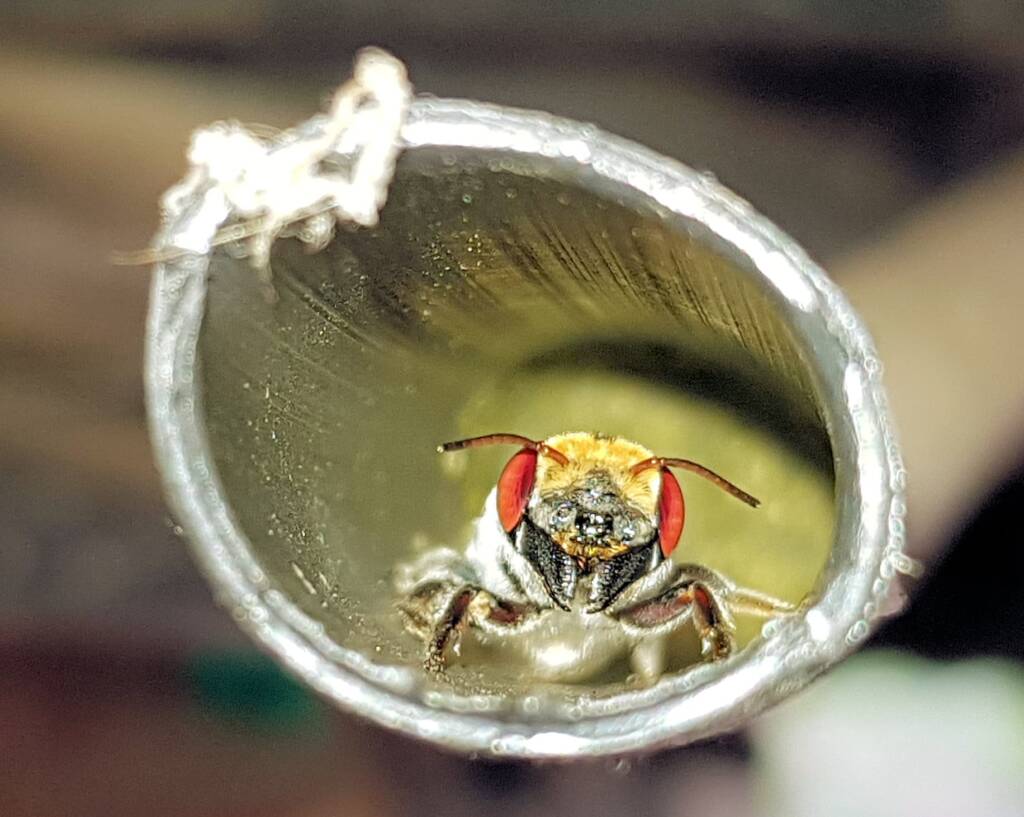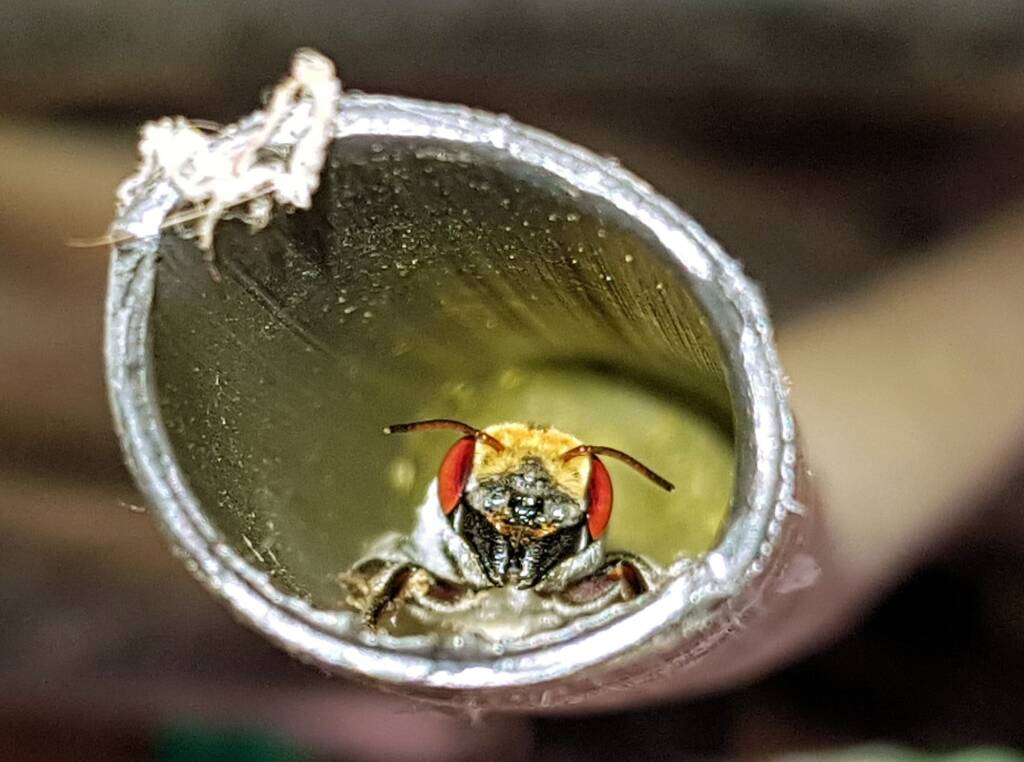Author Koh Lin ◦
Wow… there is excitement plus outside our house… a hive of activity…
With the nesting behaviour of the Golden-browed Resin Bees (species Megachile aurifrons), the frantic flitting to and fro of the Masked Bees (Hylaeus sp), the silent pose of the Bee Fly (genus Anthrax ), the mating ritual of the wasp (subfamily Eumeninae), and the larder preparation of the Mud Wasp (species Delta latreillei, previously classified as Eumenes latreilli), it was like the real life unfolding of a David Attenborough documentary.
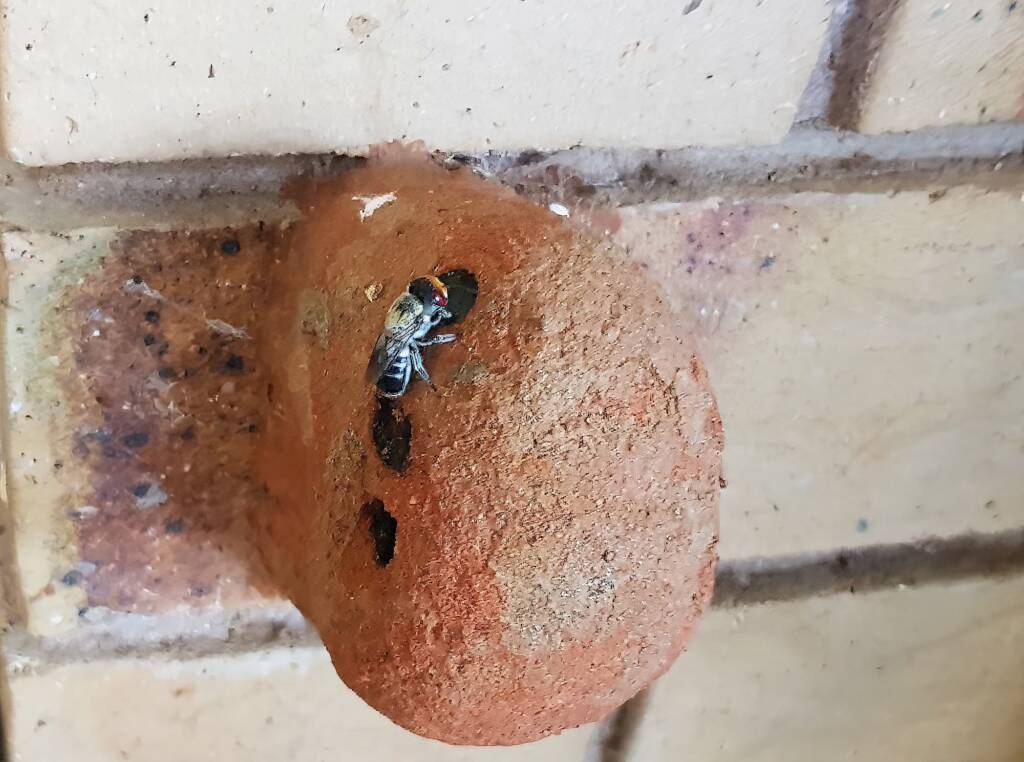
It might seem to be that we have a large garden, but all this activity was happening at the entrance way of our home.
At the front of the house, we have an undercover verandah that provides shade and shelter at our front door. Nothing flash, just a simple verandah that starts from the edge of the house to the front door. On our verandah there is an old bench seat made from the wood remains of an old Indonesian boat. This was a birthday present from my partner that was purchased from one of our local interior design stores. To protect the wood I used to diligently oil it every year with a furniture polish, an Australian orange oil product. Although I haven’t done the oiling for a few years now. It was then about mid this year that I had been thinking, I should oil the bench, as there were splits starting to appear in its surface. But on closer inspection of the bench, I now have an excuse to not do the chore, as a species of the Masked Bees were making themselves at home in our wooden boat bench. The use of orange citrus wood oil most probably would not agree with these little bees.
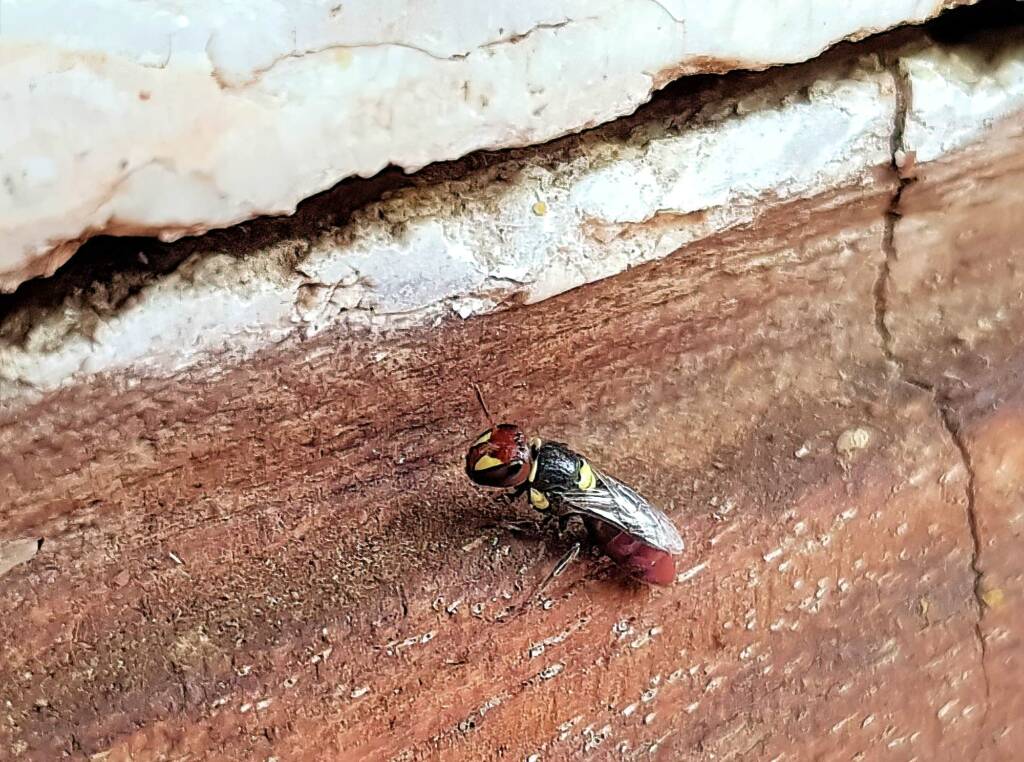
The Masked Bees (which I have since discovered are called the Red-headed Masked Bee, Hylaeus ruficeps) were flitting around, landing quickly on the bench and seemingly to dash for the cracks and holes, to disappear from view. It was on one of these occasions that I notice another actor in the scene, the Bee Fly (family Bombyliidae, genus Anthrax sp), silently waiting off stage, like an assassin, although I read the adult Bee Fly generally only eat pollen and nectar. It is of course where they lay their larvae that may spell danger to the other bees.
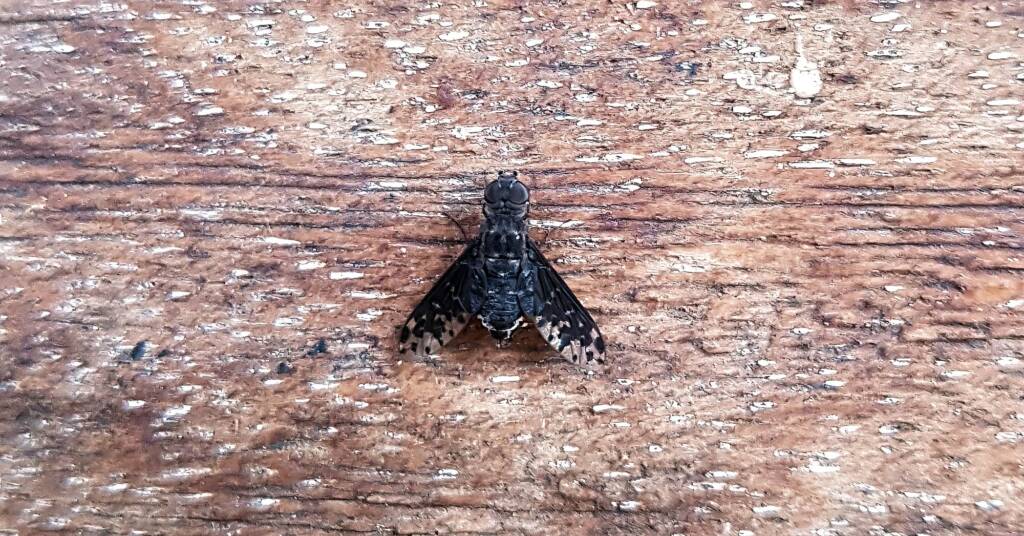
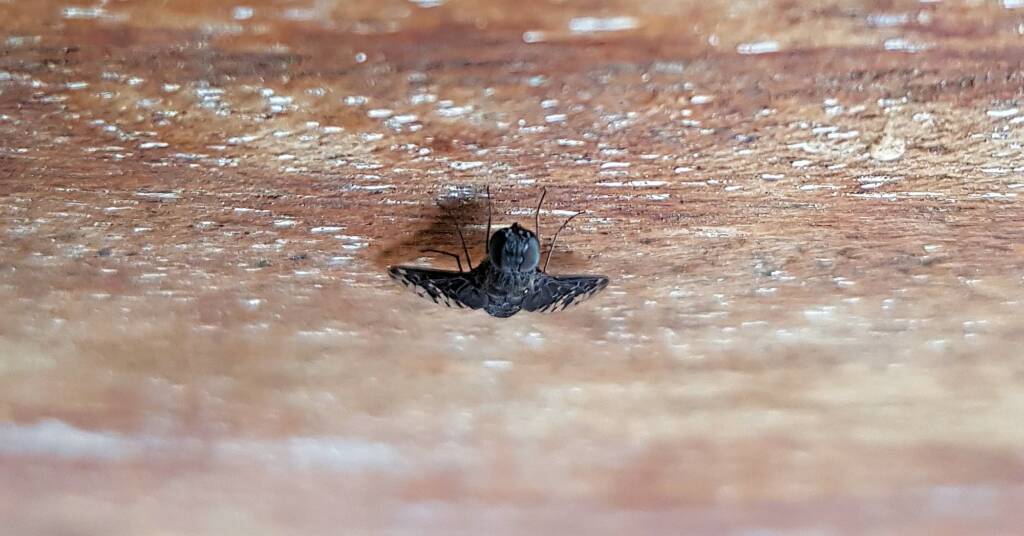
Meanwhile… there were two types of mud nests at my front door. One was made from the red sand of Central Australia, the other was built from a more grey brown clay. I was familiar with the former red coloured nest, as it was attached to the wall and had been built and enlarged over a period of about three years. Whilst low on the wall (at ankle height), it was in a protected position. This wonderful creation was by a large fierce looking orange and black Potter Wasp (Eumenes latreilli), also called a Mud Wasp. Assuming it was the same wasp, it had been very active over the few years, building the structure and enlarging it each year.
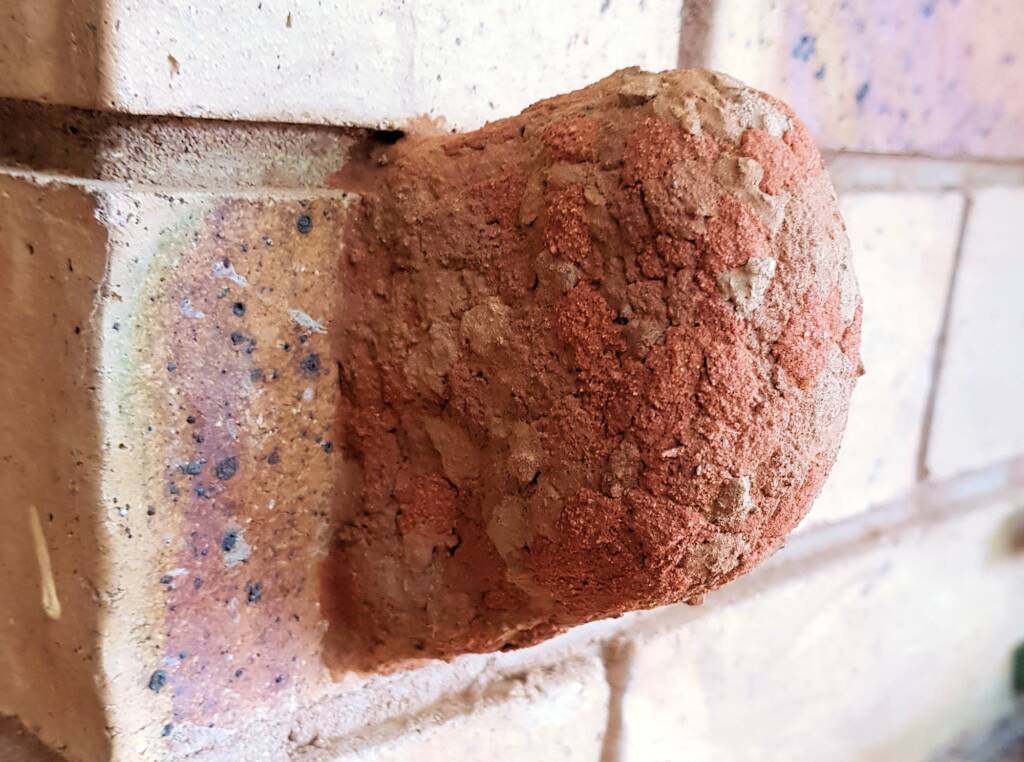
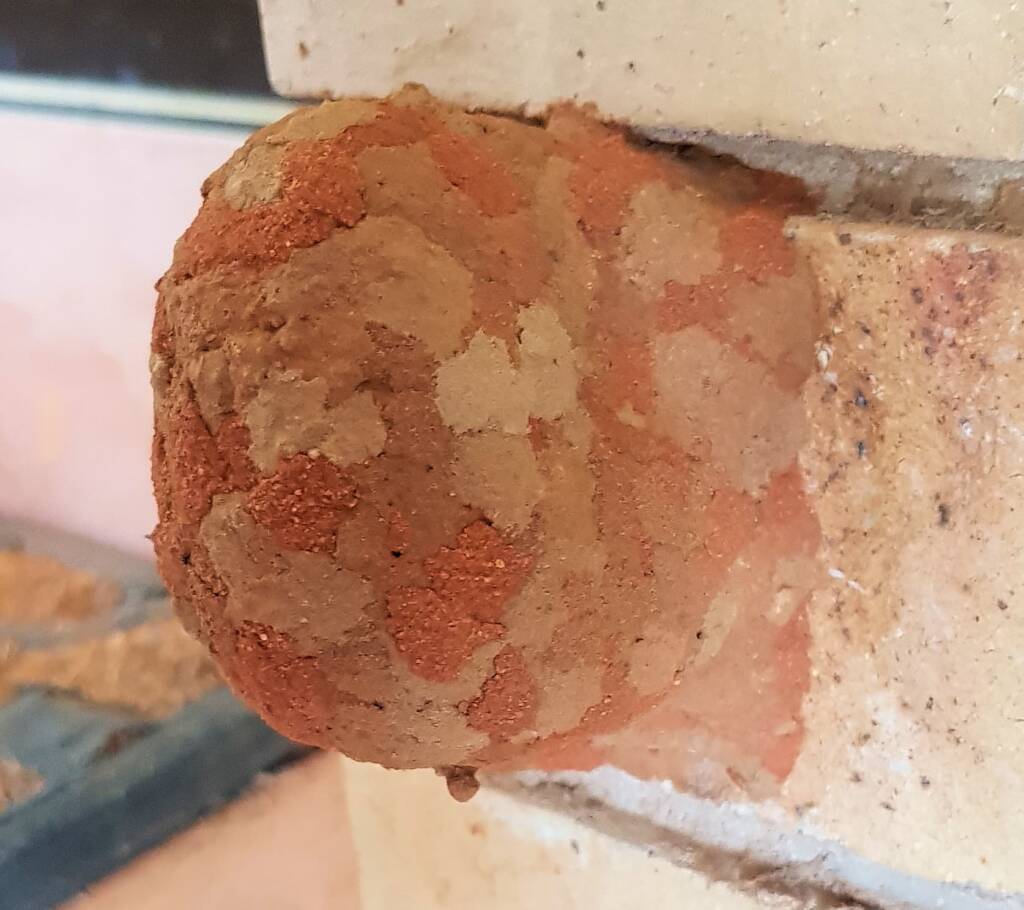
Unfortunately, back then I only gave it cursorily attention, so missed out on seeing the Potter Wasp filling the nests with the larvae, sealing the nest and the emergence of the fully fledged young Potter Wasps. You can see in the image above the different coloured sand used to plug the nesting holes with the larvae inside.
Then last year I saw there was another mud nest being built on the ground just below it. It was made from the grey-brown sand, so I naturally assumed it was a different type of wasp. This year, I was amazed to see the structure on the ground was bigger and then seeing the same species of orange and black wasp that had built the red mud nest on the wall hovering around the grey brown mud nest on the ground.
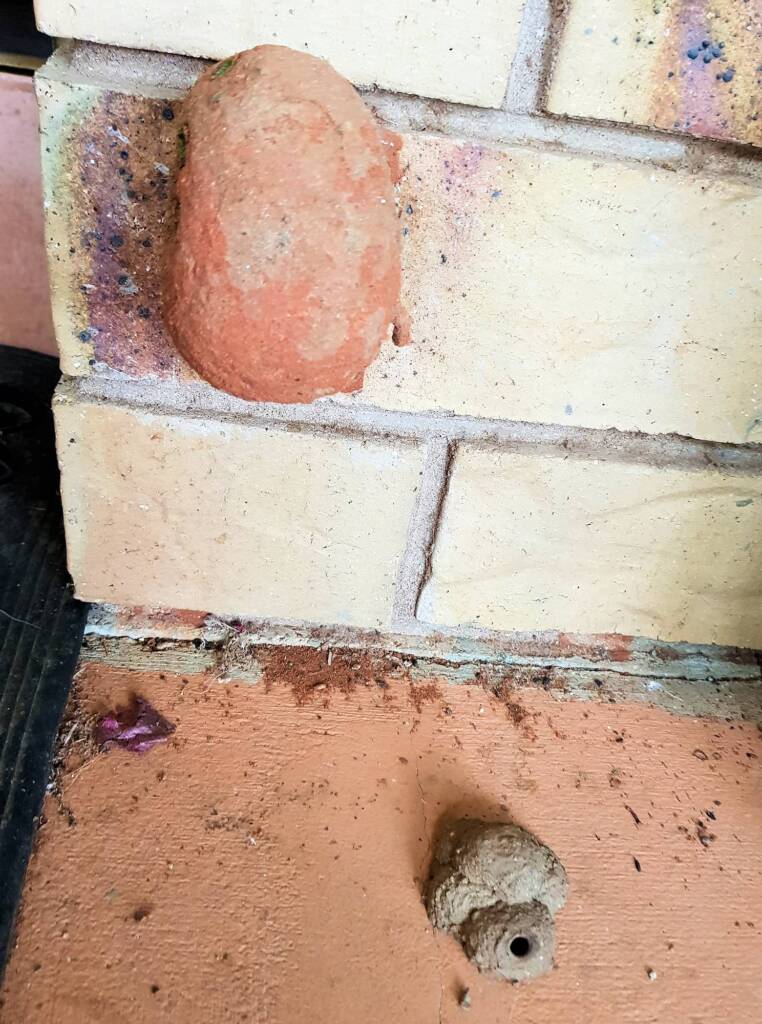
Who knows if it was the same wasp, or an offspring, as I am not familiar with the lifespan of these wasps. Anyway, I saw that the Potter Wasp had built an extension on the front of the structure on the ground. But it appeared to not be big enough… so a larger wall was constructed.
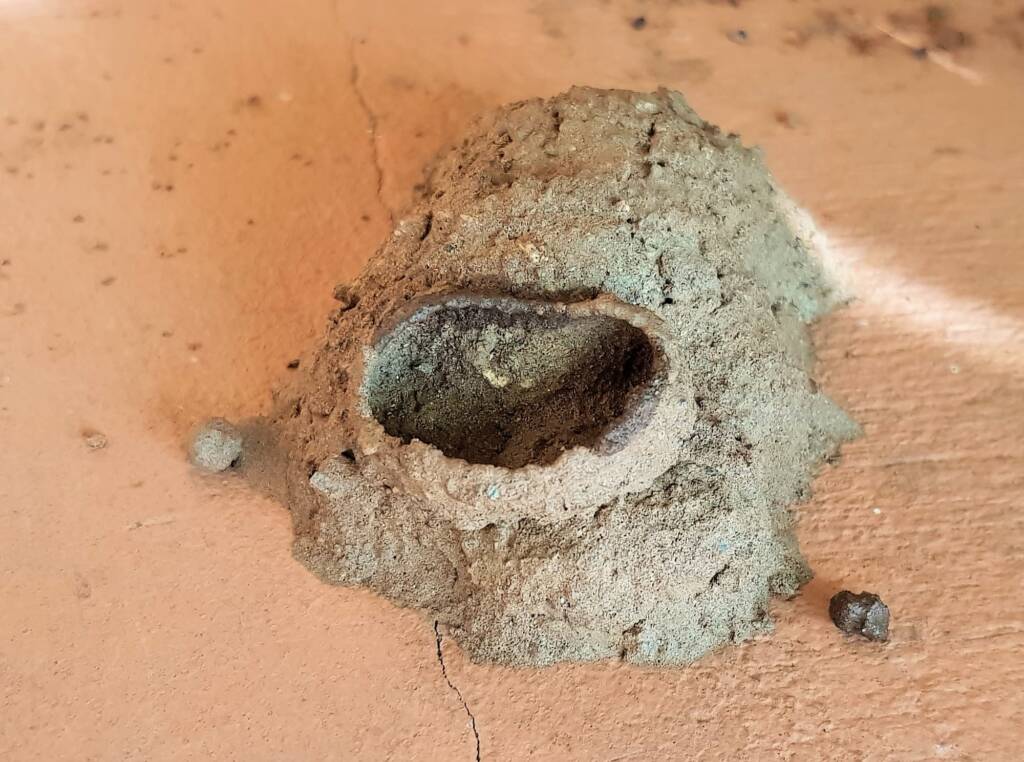
Once the extension to the mud nest had been constructed, I could see something was inside. Out came my trusty mobile and with the flash on, I took a few quick photo. It was the Potter Wasp larva.
Now that the larva had been laid, the Potter Wasp set up about filling the cell with food for the offspring. In this instance, the prey that the Potter Wasp brought back were caterpillars.
The larder was diligently stuffed full of caterpillars for the larva. The main prey was the common caterpillar Cabbage Looper (Trichoplusia ni). There may had been other species of caterpillars, but wherever it was getting the Cabbage Looper, there seem to be a plentiful supply. There would have been approximately 15 to 20 caterpillars stuffed in there. This is only a guess as there could have been more, considering the size of the nest cell.
Once the cell was full, the Potter Wasp then sealed the cell. Sometimes it would come back and add more cells to the mud nest, or I would assume it would continue its nesting at other mud nesting sites in the area. Whilst they do not reuse existing holes vacated by the newly form adults, the Potter Wasps are known to add more mud to existing mud nests to create new cells.
Meanwhile, just a mere few centimetres away, there was more action going on…
There was another wasp of the Eumeninae sp flying around. It then landed on the right side of the mud nest on the lower wall. At first I did not notice… and it was only later when I zoomed in on my photo, that I realised another one of the same species of wasp was in a small hole in the mud nest. It appeared that the one outside the mud nest was enticing the one in the nesting hole out. Aaahh… whispering sweet promises.
Now that series I never watched sprang to mind… “Sex in the City…” but this was one show I could watch… although Alice Springs is far from being a city. Unfortunately, my photos are not that focussed… I clearly must have been excited… 😊
Now back to my all time favourite bee, only because I have been able to document their life and times… the Megachile aurifrons… aka the Golden-browed Resin Bee. Indeed to be able to document it at work, and then find they were also nesting at our home, the excitement and pleasure I got was almost too much. ![]()
They were nesting in the red mud nest at my front door… busy filling the nest with pollen and laying their larva. You knew they were finished when they sealed the hole with resin.
They soon ran out of holes to use at my front door, then lo and behold, I found the Golden-browed Resin Bees nesting in some irrigation water tubes I had lying around in my back garden.
So remember… there is a jungle out there… and I will leave you with this Bynoe’s Gecko (Heteronotia binoei), that I rescued out of my dogs drinking bowl…
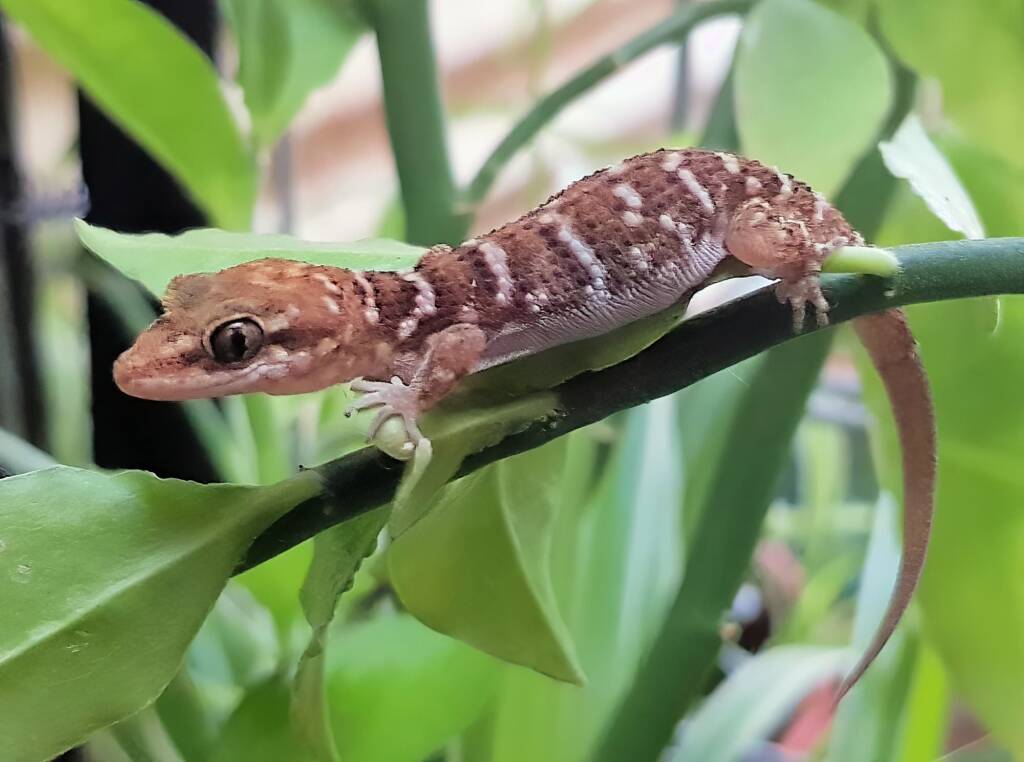
You may enjoy our blog a penthouse with a view…
Footnote & References
- Megachile aurifrons, https://ausemade.com.au/flora-fauna/fauna/insects/megachile-aurifrons/
- Hylaeus sp, https://ausemade.com.au/flora-fauna/fauna/insects/bees/hylaeus-sp-masked-bee/
- Bee Fly, https://ausemade.com.au/flora-fauna/fauna/insects/bee-fly-bombyliidae-anthrax-sp/
- Potter Wasp, https://ausemade.com.au/flora-fauna/fauna/insects/potter-wasp-eumenes-latreilli/
- Eumeninae, https://ausemade.com.au/flora-fauna/fauna/insects/eumeninae/

